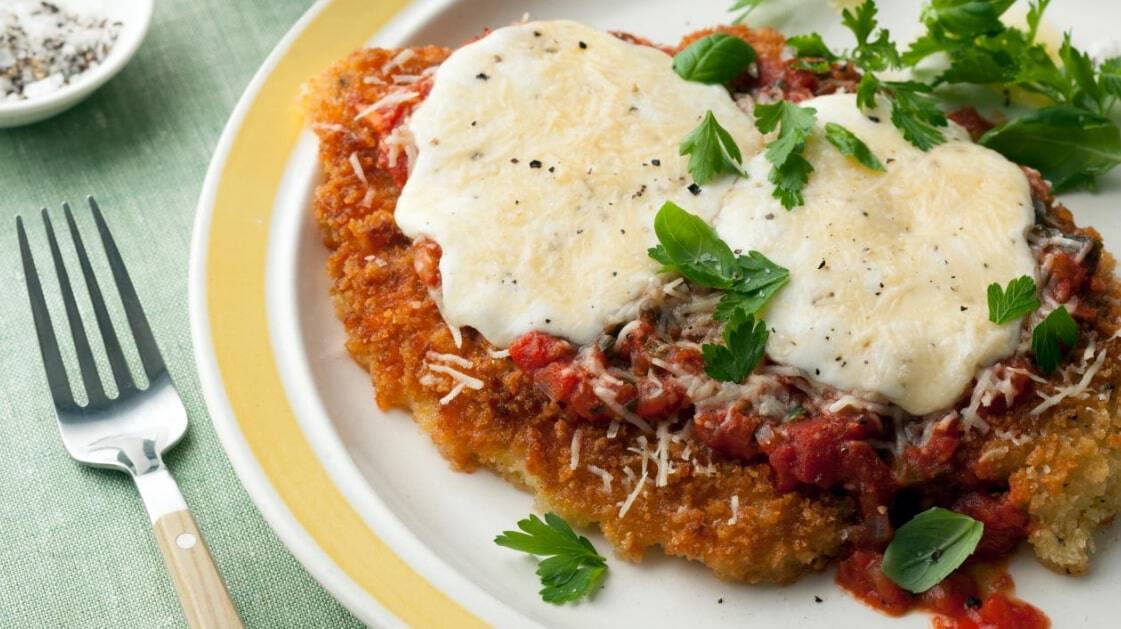The post Most Loved Australian Cooking Show Judges of All Time appeared first on TheAussieway.
]]>As we settle comfortably in our couches and beds with remotes, phones, or tablets in our hands to hit play on these cooking shows, we don’t just prepare ourselves to root for our favourite contestant but also to witness our favourite chef judges in action. Because, let’s be honest, our opinions do get biased based on what they say. So let’s take a look at some of the most loved Australian chef judges of all time.
Gary Mehigan
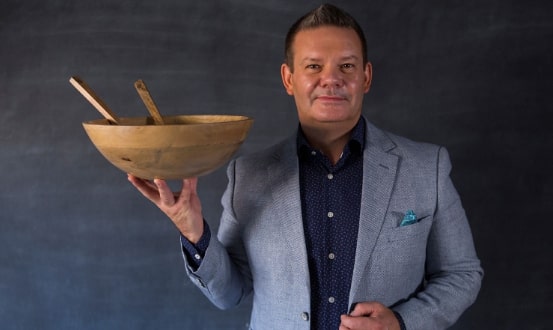
Gary Mehiga, an English-Australian chef, was one of the original judges of one of Australia’s most famous cooking shows, Masterchef Australia, alongside Matt Preston and George Calombaris. With his formidable cooking skills and affable personality, he easily became a popular name in Australian households. He later starred as a host in the show Good Chef Bad Chef and also started his own series called Far Flung with Gary Mehigan. He also appeared as a guest judge in another popular Australian cooking show, My Kitchen Rules. It is his warm demeanour and genuine interest in nurturing the talent of budding chefs that have earned him love and respect in the community.
George Calombaris
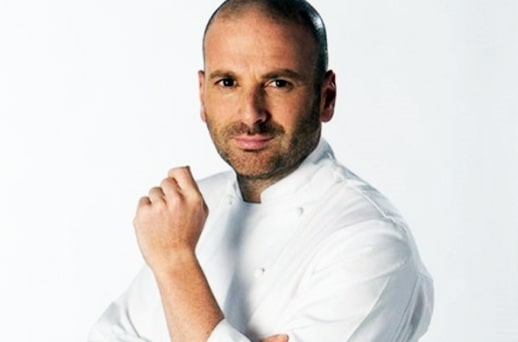
Geoge Calombaris is also an original judge of the show Masterchef Australia. But did you know that before his Masterchef fame, he was also a part of a daytime cooking show called Ready Steady Cook? Calombaris brought a unique flair to the cooking shows pertaining to his Greek-Australian heritage. His journey in the culinary field began at a very young age, and since then he has won many awards, including Young Chef of the Year, Best New Restaurant, and two chef’s hats in The Age Good Food Guide. His passion for food always puts him front and centre at cooking shows. Even though he has been a part of a few controversies, his popularity as a judge remains unhinged.
Matt Preston

Best known as one of the original judges on Masterchef Australia, English-American chef Matt Preston is also a food critic, writer, food journalist, and television and radio presenter. Recently, in 2022, he also became a judge on the popular cooking show My Kitchen Rules. His larger-than-life persona easily captured the attention of viewers and contestants alike, instantly making him a favourite. Being a journalist and senior editor for Delicious and Taste magazines, his ability to provide constructive feedback and valuable insight is unparalleled. He left MasterChef Australia after judging the show for 11 years and to date, viewers hope for his comeback in the show.
Shannon Bennett

Shannon Bennett is also extremely well known as a recurring guest judge in the show Masterchef Australia. However, to the viewers and contestants, Bennett is more than just a judge, he is a mentor as well as a competitor. His patient mentoring and humble personality alongside his exceptional culinary skills make him one of the most loved chefs in the show. He honed his skills under the masterful guidance of famous chefs like John Burton Race and Marco Pierre White. His refined sense of taste has earned him respect and love, establishing his status as one of Australia’s most cherished cooking show judges.
Nigella Lawson
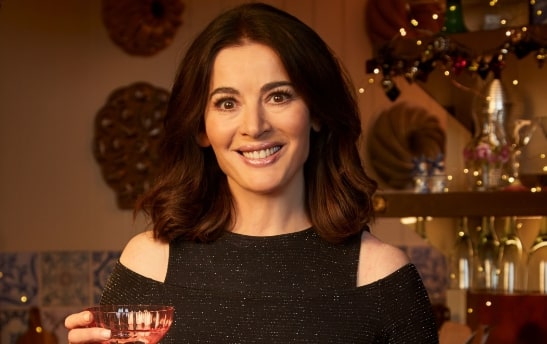
Oxford Graduate Nigella Lawson is most well-known as the editor of the Sunday Times. Although she was neither originally Australian nor had formal culinary training, Lawson still managed to mark her presence as an eminent personality in the Australian culinary world. She judged the popular show My Kitchen Rules, appeared as a guest judge on the popular show Masterchef Australia and also hosted several cooking shows of her own. Her sensual approach to cooking and her decadent recipes made her an instant hit with the viewers, making her one of the most loved chef judges.
Jock Zonfrillo
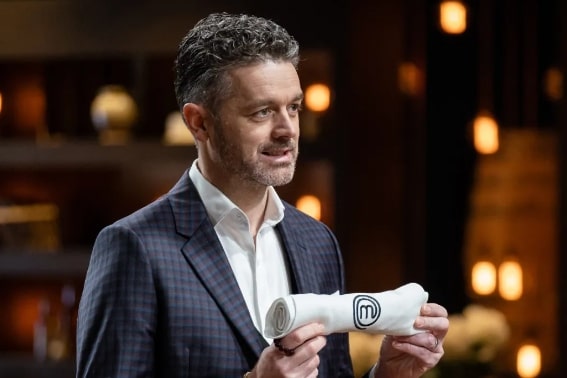
The late Jock Zonfrillo earned his fame as a judge of Masterchef Australia after replacing the original judges, Gary Mehigan, Matt Preston, and George Calombaris, along with Melissa Leong and Andy Allen. Hailing from a humble family, he immigrated to Australia in 2000 and brought with him his passion for food, which showcased the diversity and richness of Australian cuisine. He also founded the Orana Foundation to preserve the historical cooking techniques and ingredients of Indigenous Australians. His unfortunate demise in 2023 caused great sorrow to the loyal viewers of Masterchef.
In this ever-evolving landscape of Australian cooking shows, there will be more shows we’ll fall in love with and even more judges we’ll admire. But the journey of these beloved Australian chefs will always remain embedded in our hearts. As they continue to inspire upcoming culinary talents with their passion, skill, and charm, their legacies will remain forever.
The post Most Loved Australian Cooking Show Judges of All Time appeared first on TheAussieway.
]]>The post 10 Alternatives To ChefGood – The Healthy Meal Delivery Services In Australia appeared first on TheAussieway.
]]>
What is a healthy meal, and why is it important for everyone?

Healthy food delivery services have become indispensable in today’s fast-paced world, where time is limited and health is of the utmost importance. ChefGood, a pioneer in this field, emphasises flavour, quality, and personalization. Delicious, nutrient-dense meals that satisfy a range of nutritional requirements are produced by their dedication to using only the freshest, locally sourced products.
Positive evaluations highlight how excellent they are in terms of health and convenience. With options such as Youfoodz, Dietlicious, and My Muscle Chef, Australia’s healthy meal delivery market is diverse and dynamic. Every service, including ChefGood, emphasises that everyone deserves tasty, health-conscious meals for a dynamic lifestyle by providing a distinctive culinary experience.
Busy Lives, Forgotten Health: How We Lose Track of Eating Right
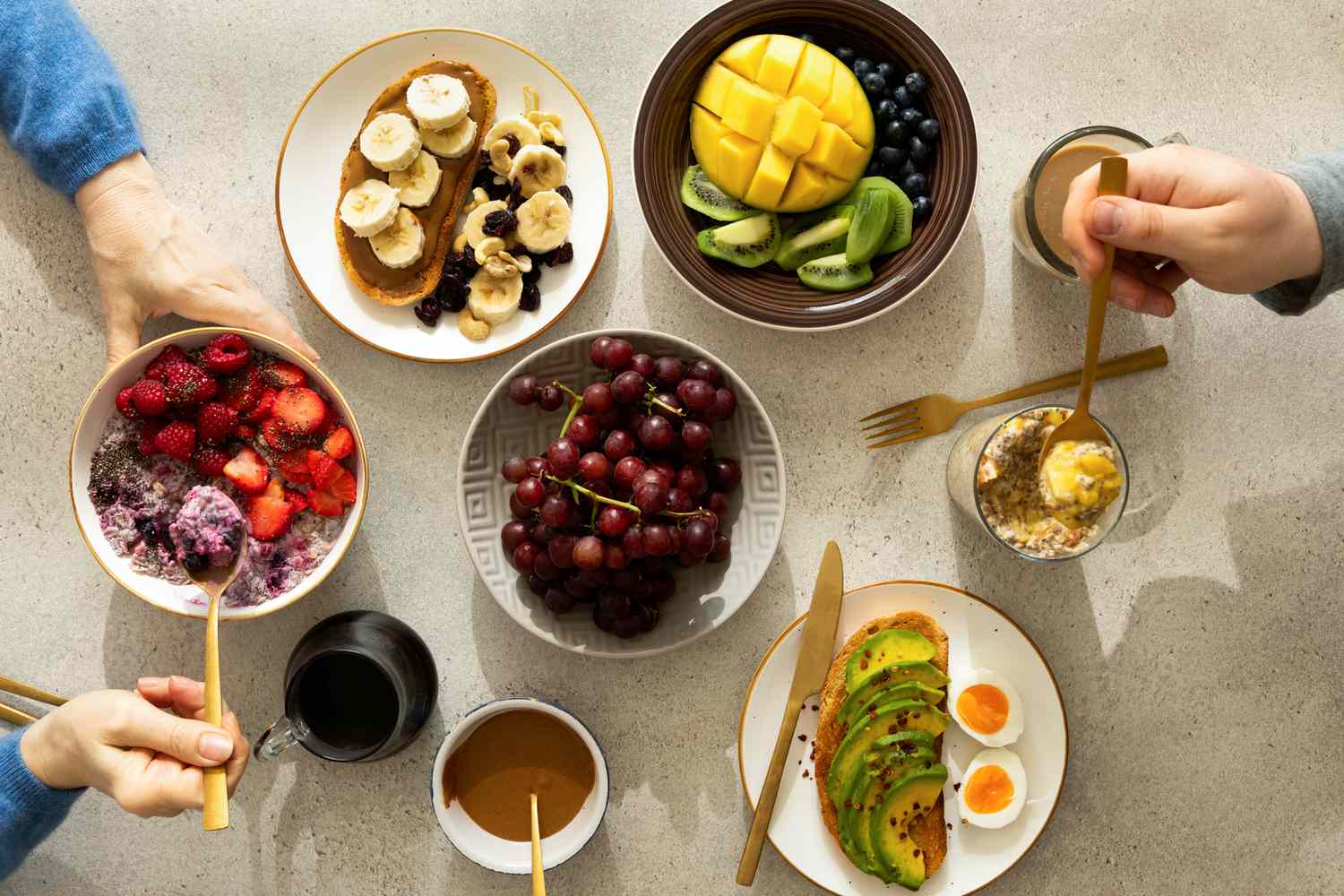
Image Credit: https://www.health.com/nutrition/how-to-start-eating-healthy
In the frenetic rush of modern life, the pursuit of success sometimes comes at the expense of our health, and in the turmoil, it is easy to overlook the significance of eating healthfully. As time grows scarcer, we are more susceptible to the allure of convenience over well-being. Lunches that are grabbed on the run and quick food pit stops have supplanted thoughtful, healthful selections.
Our bodies are trying to urge us to put our health first, but the rhythm of our everyday existence obscures their message. The significance of eating well is overshadowed by deadlines and responsibilities during this busy marathon. We discreetly forfeit the long-term benefits of a nutritious diet in favour of the momentary relief provided by quick fixes in the never-ending race against time.
ChefGood: A Culinary Revolution in Healthy Meal Delivery
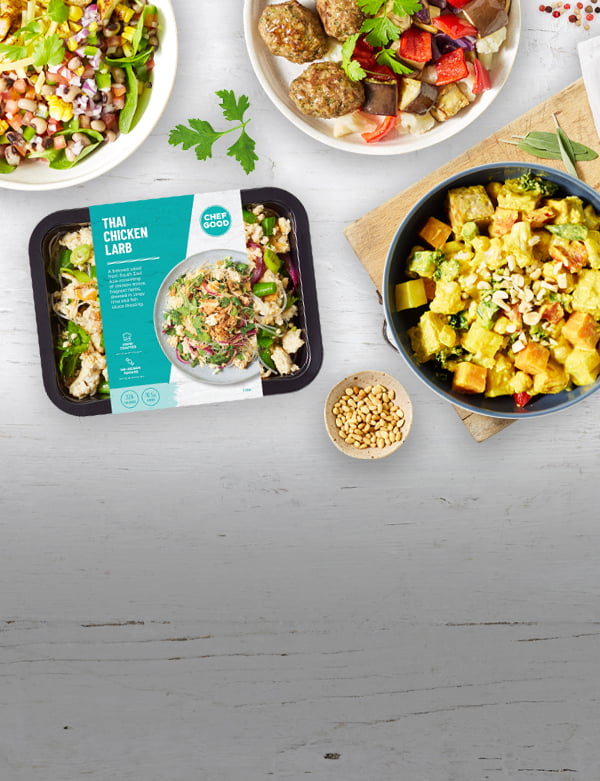
Image Credit: https://chefgood.com.au/meal-plans/low-carb/
ChefGood stands out in the highly competitive meal delivery sector with its unique proposition, rooted in the fusion of fine ingredients and cutting-edge culinary methods. At the core of ChefGood’s concept is an unwavering commitment to crafting a healthy meal that caters to diverse dietary needs while prioritising taste and nutrition. The company’s commitment to quality is seen in its emphasis on using products that are procured locally and freshly.
What sets ChefGood apart is its meticulous dedication to detail in producing chef-designed meals that satisfy a range of dietary requirements, including nutritional food such as vegan, low-carb, plant-based, and gluten-free options to make a cheap, healthy meal. This dedication encourages personalization by enabling customers to have a culinary adventure according to their own dietary needs.
Numerous positive reviews that emphasise the smooth shipping procedure, the freshness of the materials, and the well-balanced flavour and nutritional content attest to ChefGood’s outstanding reputation. ChefGood’s dedication to providing a wide menu that meets a variety of dietary requirements is further supported by FoodBoxMate’s review, which makes it a desirable option for anyone looking for a customizable and healthy meal plan to lose weight or bulk muscle.
How Healthy Meal Delivery Services Work in Australia
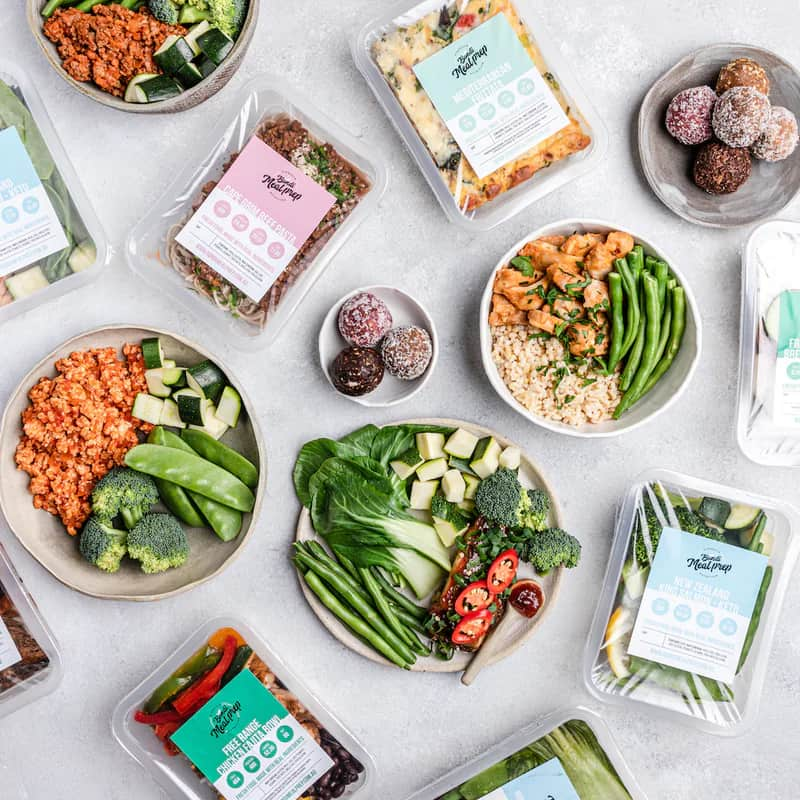
Image Credit: https://bondimealprep.com.au/collections/best-meal-delivery-service
In a bustling landscape where time is precious and health is paramount, healthy and prepared meal delivery services have emerged as a lifeline for individuals seeking convenience without compromising on nutrition. These services change the way Australians plan and prepare meals by providing a simpler process.
The Seamless Process of Healthy Meal Delivery Services
Menu Selection: Customers are provided with an extensive array of meal selections that have been handpicked by skilled chefs and nutritionists. These menus include choices for vegan, vegetarian, gluten-free, low-carb, and other diets to suit a variety of dietary needs.
Order Placement: Part of the convenience of these services is the easily navigable platforms they use, be they applications or websites. Customers just peruse the offerings, select their preferred dishes, and place their orders.
Meal Preparation: Expert chefs meticulously create each dish using fresh, locally sourced ingredients, ensuring a harmonious balance of flavour and health benefits with every bite.
Packaging and Delivery: Carefully packaged in eco-friendly containers, prepared meals maintain their nutritional value and freshness, and convenience is ensured with prompt delivery straight to the customer’s door.
Adaptability and personalization: Many of these companies prioritise customization, enabling customers to tailor meals to their specific nutritional needs or wellness objectives.

Let’s find out 10 best alternatives to Chefgood
Youfoodz
Youfoodz is a leading meal delivery business that is praised for both its user-friendly approach and diversity. Youfoodz is known for its wide range of freshly prepared meals that are expertly prepared to meet a variety of dietary requirements. Youfoodz makes eating healthy easier with options ranging from low-carb and gluten-free to vegan and vegetarian. Not only does the service offer wholesome meals, but it also offers a user-friendly and easily navigable platform.
Youfoodz stands out as the perfect option for anyone looking for a smooth and health-conscious eating experience that skillfully blends flavour and well-being, thanks to its dedication to freshness and flavour.
Dietlicious
Dietlicious sets itself apart by emphasising portion-controlled meals and offering a customizable menu that is carefully designed to fit in with a variety of health goals. This cutting-edge service guarantees harmonious flavours and quantity sizes, providing a well-rounded and regulated nutritional approach. The emphasis on portion control is not only conducive to healthy eating but also aligns with cheap and easy healthy meal prep, making it an affordable choice for those conscious of their budget.
Dietlicious offers a selection of nutritious meal plans that promote weight reduction and muscle-building objectives for anyone looking for nutrient-dense food delivery. As part of the broader landscape of prepared meal delivery services, Dietlicious presents itself as a dependable and adaptable choice for anyone seeking a quick and health-conscious dining experience.
My Muscle Chef
A fitness enthusiast’s ally, My Muscle Chef specialises in promoting muscle building with its carefully selected menu of meals that are high in protein and balanced in calories. Designed for individuals committed to consistent exercise, the service distinguishes itself in the healthy meal delivery market by emphasising nourishing food that promotes muscle growth.
Recognizing the importance of both convenience and health, My Muscle Chef provides not only a nutrient-dense and well-balanced healthy meal plan but also an affordable option for those seeking cheap and easy healthy meal prep. This commitment to affordable and nutritious options solidifies its position among top-notch healthy meal delivery services, offering tailored plans for those aiming to lose weight or bulk muscle.
Nourish’d
Nourish’d stands out in the realm of healthy meal delivery services, placing a dedicated focus on organic ingredients. Fitness aficionados and proponents of whole foods are served by Nourish’d, which has an uncompromising dedication to sustainability and nutrition. The meals are provided in a way that not only follows a healthy meal plan but goes above and beyond, offering a comprehensive approach to wellbeing. With a focus on nourishing cuisine,
Nourish’d makes sure that every meal provides both taste and vital nutrients. As a prepared meal delivery service, it excels in offering convenient and accessible options for those seeking cheap and easy healthy meal prep. Nourish’d is becoming the go-to option for a health-conscious adventure, regardless of whether the goal is to gain muscle mass or reduce weight.
Soulara
To simplify your plant-based life, Soulara is an ideal choice. It is known for its plant-based cuisine and prides itself on providing flavorful, health-conscious vegan options that are expertly prepared by chefs and dietitians. Dieticians design every meal and you can be sure there is nothing nasty on your plate that can impact your health. Enjoy healthy and whole foods that are rich in antioxidants, minerals, etc. and as the chefs know how to bring the best from every vegan ingredient, there is no compromise on taste as well. Taste and health go hand in hand with Soulara.
THR1VE
In the world of healthy food delivery, THR1VE stands out for its dedication to health by taking inspiration from Paleo diets. The core of THR1VE is that it uses whole, unprocessed products and follows Paleo lifestyle guidelines. This commitment encompasses more than just food preferences; it is a holistic way of living well. THR1VE makes sure that its meals not only entice the senses but also promote general well-being by using whole and natural ingredients. Focusing on unprocessed goodness, THR1VE becomes a lighthouse for everyone looking for a pure lifestyle that is both balanced and nutritious.
Consume Healthful Food
With a strong focus on nutrient-dense meals, Consume Healthful Food deliberately stands out and carves out a unique position in the market for healthy culinary solutions. The basis of this service is a well-considered approach that makes it easier to customise meal plans to satisfy a range of dietary and nutritional needs. Eat Well Food prioritises nutritional density so that every meal nourishes as well as satisfies, providing a range of alternatives for those with different health objectives.
Dine In
Well-known for its chef-prepared meals made with locally and sustainably produced ingredients, Dineamic draws in health-conscious patrons searching for delectable, morally responsible choices. is a great option for anyone looking for a precisely tailored and health-conscious approach to their dietary needs and general well-being because of its dedication to providing nutrient-rich, customised offers.
Five Point Four
Five Point Four stands out as a prominent participant in the healthy meal delivery market by providing portion-controlled selections that are intended to support a balanced diet. Strategically emphasising calorie-restricted meals as a means of weight management, Five Point Four serves people looking for a methodical approach to achieving their dietary objectives. The success of the service among those on weight control journeys might be attributed to its dedication to offering wholesome and fulfilling meals.
Every meal that the chef creates is an example of how culinary skill and nutritional science can coexist. Five Point Four makes sure that its health-conscious customers may indulge in a wide range of flavours while still meeting their dietary goals by providing a varied menu. The service is an attractive option in the world of healthy eating since it succeeds at making it tasty and convenient.
SpoonFed
SpoonFed’s relentless dedication to flavour, health, and user-friendliness has captured the attention of the culinary world. Its commitment to serving chef-curated dishes and delivering an exceptional dining experience is fundamental to its concept. What makes SpoonFed unique is that it pays close attention to a variety of dietary demands and provides a selection of solutions to meet those needs.
SpoonFed is a shining example for everyone looking for a fulfilling and comprehensive culinary experience since it balances flavour and health. The service creates an experience where every mouthful is a celebration of flavour and a deliberate decision for wellbeing, rather than just serving meals. With its focus on customer happiness and culinary competence, SpoonFed stands out as a notable option for satisfying and healthful meals.
“Why wish for more when you’ve got someone like ChefGood delivering healthy meals to your door? It’s like having your well-being served on a plate—literally!”
The post 10 Alternatives To ChefGood – The Healthy Meal Delivery Services In Australia appeared first on TheAussieway.
]]>The post How Australia’s Native Ingredients Taste appeared first on TheAussieway.
]]> 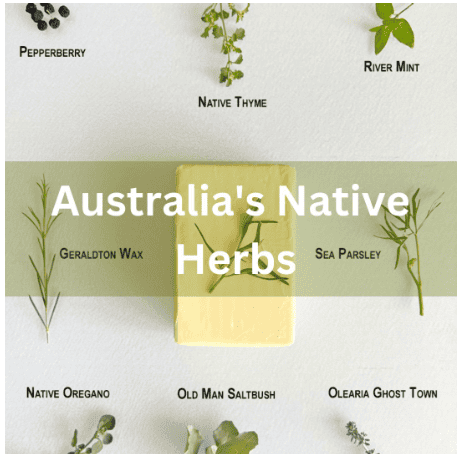
Australia’s Aboriginal and Torres Strait Islander communities have been harnessing the power of these native ingredients for centuries and are using them for traditional medicinal purposes and building delicious menus. Let’s look at the list of these remarkable ingredients and understand what is so special about them that they are part of an Aussie lifestyle and what is behind those lip-smacking Australian dishes that tourists can’t resist.
1. Wattleseed
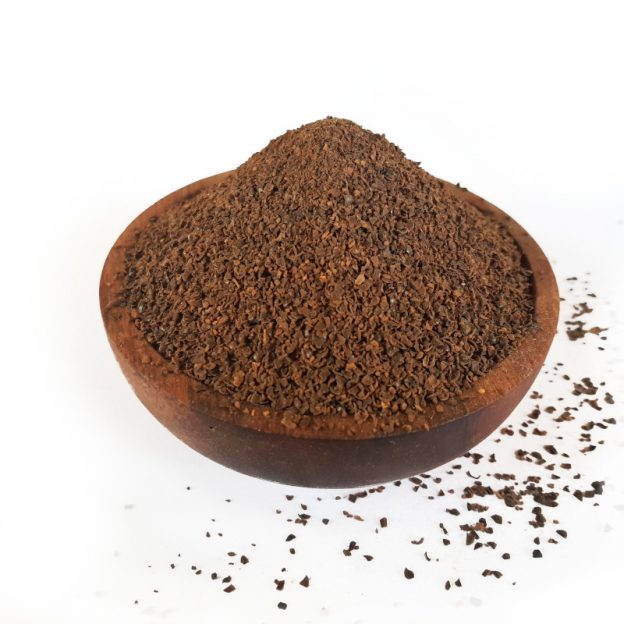 It is a versatile ingredient that is derived from the Acacia tree and has a nutty, roasted flavour. It is defined as the combination of chocolate, coffee, and hazelnut, which makes it a popular ingredient in baked foods, beverages, and desserts. It is rich in fibre and protein. It also offers nutritional benefits.
It is a versatile ingredient that is derived from the Acacia tree and has a nutty, roasted flavour. It is defined as the combination of chocolate, coffee, and hazelnut, which makes it a popular ingredient in baked foods, beverages, and desserts. It is rich in fibre and protein. It also offers nutritional benefits.
2. Kakadu Plum
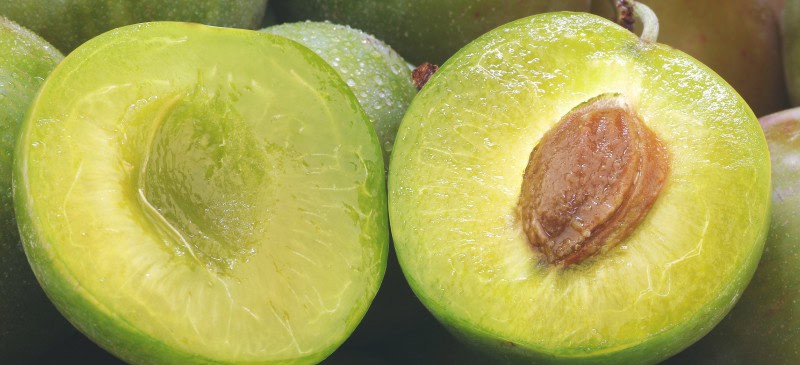
Kakadu Plum stands as a testament to the diverse and bountiful offerings of Australian native ingredients, which have gained a place as a vital resource for culinary exploration and holistic well-being. The lip-smacking tartness paired with vitamin C content not only boosts the immune system but is also ideal for collagen synthesis and antioxidant protection. It is yellow-green in colour and is used for jellies, jams, juices, etc.; it can be eaten fresh as well.
Wellness freaks, chefs, and nutrition experts have been attracted to this particular ingredient, which was also used by Aboriginal communities in traditional practices for generations. Its medicinal properties and bioactive compounds address many health issues.
3. Macadamia Nuts
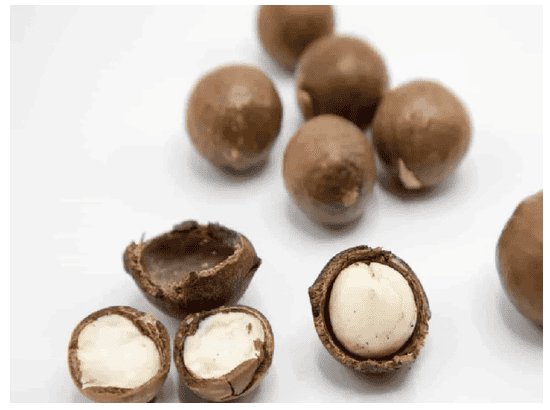
Traditionally called “kindal kindal” or “boombera” Macadamia nut stands as a testament to the country’s natural bounty and is renowned for its rich and buttery flavour. It was called so because it was used in trade items and nourishing properties. It has a crunchy texture and is a cherished ingredient in culinary creation and wholesome snacking.
This native Australian food ingredient is celebrated for its amazing taste, characterised by a creamy and indulgent flavour. It has a natural sweetness, a nutty undertone, an enjoyable texture element, and was once a delicacy amongst Aboriginal communities.
4. Bush Tomato
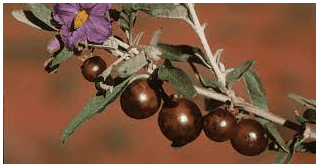 The bush tomato is a culinary treasure in Australia because it has a unique and intense umami flavour profile. It has a blend of sun-dried tomatoes, tamarillo, and caramel, which makes it a delicious food in Australia as it captivates the palate with its sweet and savory notes.
The bush tomato is a culinary treasure in Australia because it has a unique and intense umami flavour profile. It has a blend of sun-dried tomatoes, tamarillo, and caramel, which makes it a delicious food in Australia as it captivates the palate with its sweet and savory notes.
More than a food, it is an ingredient used in many Australian cuisines, lending a succulent taste to many dishes. Whether in modern gastronomic creations or traditional Aboriginal recipes, the bush tomato can enhance the flavors, and therefore, in culinary experimentation, it has secured a vital place.
5. Finger Limes
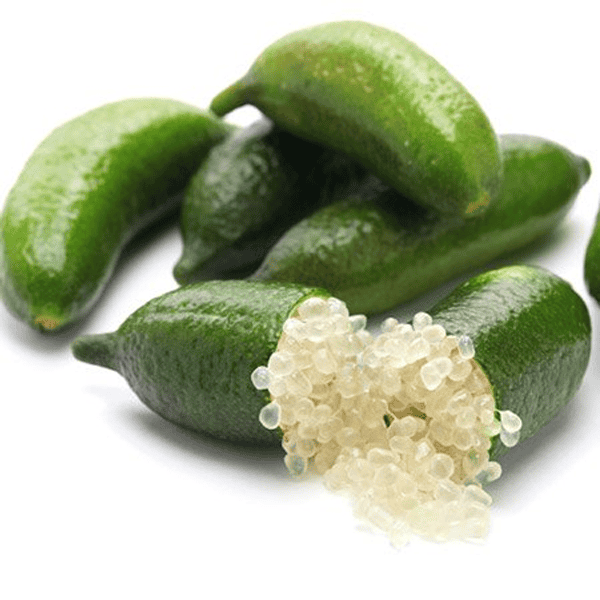 The finger lime, also called Citrus Caviar, has a true taste sensation. The pearl-like vesicles burst with a zesty lime flavour which offers a very pleasing contrast. It has good nutritional properties, like being rich in Vitamin C, and folate, and it can ward off many chronic and mild illnesses.
The finger lime, also called Citrus Caviar, has a true taste sensation. The pearl-like vesicles burst with a zesty lime flavour which offers a very pleasing contrast. It has good nutritional properties, like being rich in Vitamin C, and folate, and it can ward off many chronic and mild illnesses.
Citrus fruits are also loaded with water so they can keep you in good health as they have the best vitamins, antioxidants, minerals, etc. Finger lime is a thorny shrub found in the forests of Australia and is available in six genetically diverse varieties. It has a sour taste and a strong fragrance.
6. Crocodile
 A unique and healthy delicacy of Australia is crocodile meat, which hails from northern regions and offers a surprising blend of nutrition and flavour. It is a source of lean protein with great taste and amazing health benefits. With low fat, high protein levels, and rich omega-3 fatty acids, it becomes a wholesome choice that complements the modern dietary preferences of an Aussie lifestyle.
A unique and healthy delicacy of Australia is crocodile meat, which hails from northern regions and offers a surprising blend of nutrition and flavour. It is a source of lean protein with great taste and amazing health benefits. With low fat, high protein levels, and rich omega-3 fatty acids, it becomes a wholesome choice that complements the modern dietary preferences of an Aussie lifestyle.
It is a versatile ingredient, and the flour profile carries echoes of chicken and a nuanced fishy undertone that adds depth to every bite you take. It is used in many culinary creations and is common in northern areas. When it is grilled and marinated, it can be used in stews, gourmet burgers, etc.
7. Quandong
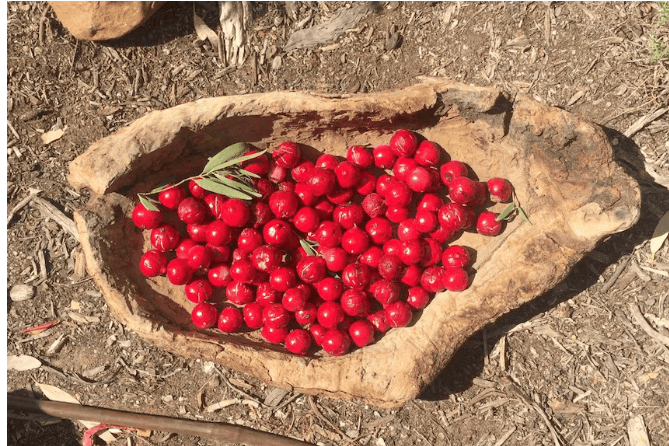
Available in arid parts of the country, Quandong offers a tart taste, is red and has a dry texture. The flavour is slightly salty and sour. The sweetness varies significantly between trees. It is a vibrant fruit whose kernel contains a range of complex oils and has antibacterial and anti-inflammatory qualities. It is a culinary delight enjoyed in stewed, dried or raw form.
8. Lemon Myrtle
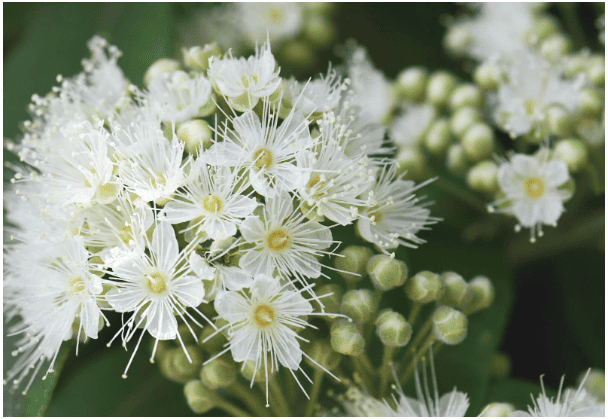
If you are looking for a vegan source of calcium, Lemon Myrtle, a shrub with versatile leaves is an exceptional choice. It offers a vibrant citrus aroma giving a refreshing and tangy taste. It has powerful antimicrobial and antifungal properties. It’s a popular ingredient used in many snacks. Many scientists believe that the minerals in Lemon Myrtle help synthesise and self-repair human DNA.
9. Green Ants
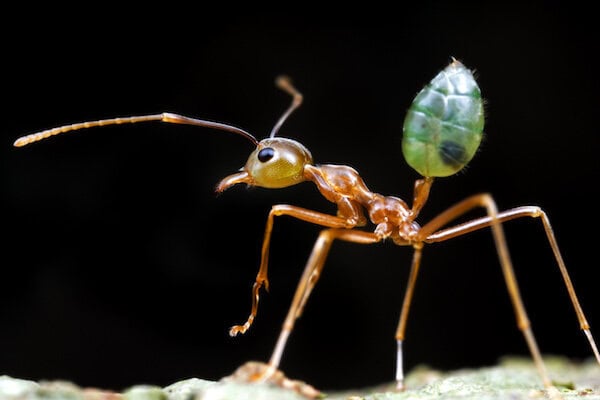
Green ants, also known as Oecophylla smaragdina, are a sought-after food ingredient known for their unique taste and cultural significance. The tiny insects offer a citrusy tang and are ideal for those looking for a zesty flavour. For sweet and savoury creations, ants’ flavour adds complexity and excitement. It is rich in antioxidants and vitamin C and also offers healing properties. These are used as garnishes and flavour enhancers by chefs and offer a truly unforgettable gastronomic experience.
10. Saltbush
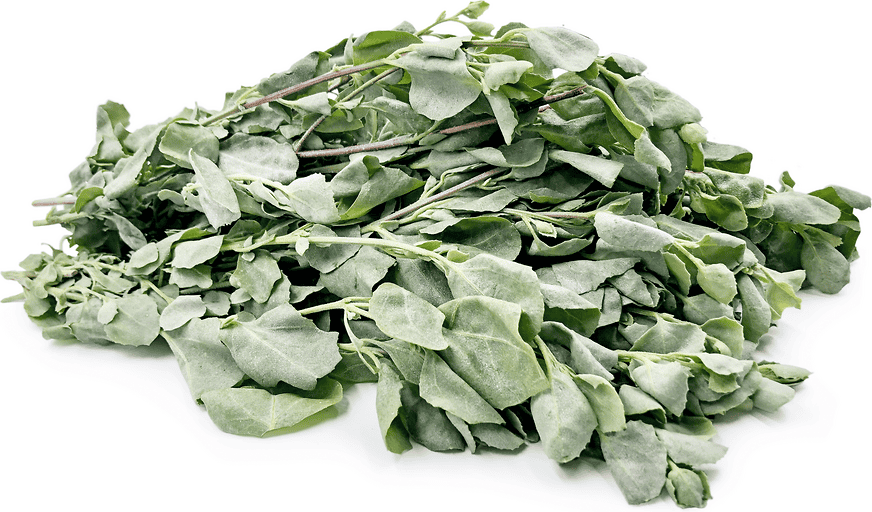 One of the best native herbs in Australia is the saltbush. It is a versatile and edible shrub with silvery green leaves that grows wild across most of the country. The leaves are fleshy with a salty herbal flavour and used fresh for salads or as a bed for roasted meats like fish, lamb, etc. Dip and fry them in the batter, or use dried leaves for seasoning. It is rich in minerals like sodium and potassium, vitamin A, vitamin C, antioxidants, fibre, etc. It offers many nutritional benefits but is not consumed in large quantities.
One of the best native herbs in Australia is the saltbush. It is a versatile and edible shrub with silvery green leaves that grows wild across most of the country. The leaves are fleshy with a salty herbal flavour and used fresh for salads or as a bed for roasted meats like fish, lamb, etc. Dip and fry them in the batter, or use dried leaves for seasoning. It is rich in minerals like sodium and potassium, vitamin A, vitamin C, antioxidants, fibre, etc. It offers many nutritional benefits but is not consumed in large quantities.
Wrap Up..
The native ingredients in Australia’s local food are great for pleasing the taste buds and improving your health. The remarkable tapestry of flavours is also delightful, and it reflects the diverse landscape of the country with an indigenous heritage. The ingredients captivated the culinary world, and apart from a rich and exquisite taste, the unique ingredients pay homage to Australia’s rich heritage and meet the diverse requirements of people looking for fresh, tasty, and clean food.
The post How Australia’s Native Ingredients Taste appeared first on TheAussieway.
]]>The post Traditional Foods Of Australia and The History appeared first on TheAussieway.
]]>From ancient culinary traditions to current flavour fusions, Australian food represents a history of adaptation, creativity, and cultural interchange. As Australians continue to celebrate their unique heritage through cuisine, they help to create a healthy eating environment that parallels the country’s natural beauty.
Land Down Under is famous not just for its breathtaking scenery and distinctive species, but also for its vibrant and diversified cuisine. This large continent-country is a blending pot, influenced by everything from its long and rich history to the waves of immigration that have defined its cuisine over the ages. Australian cuisine reflects the country’s rich history, diversified society, and unique terrain.
Learning about the evolution of Australian cuisine will help you gain a deeper understanding of the cultural, geographical, and historical factors that are responsible for shaping the food culture of the country.
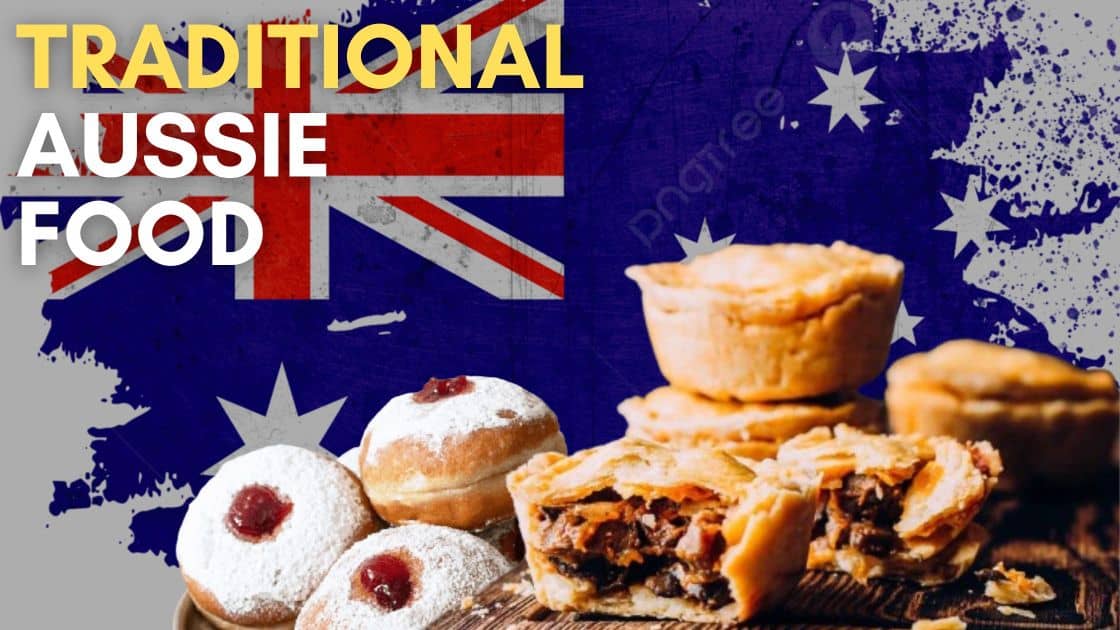
Food in Australia
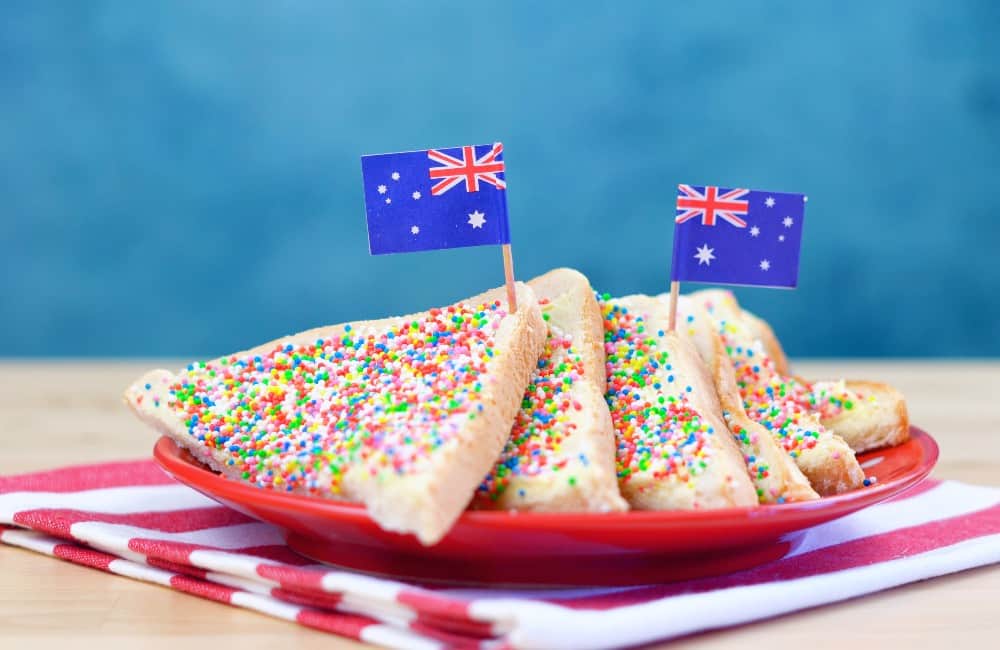
One of the most iconic foods in Australia is the meat pie. This handheld snack or meal consists of a pastry shell filled with minced meat, most commonly beef, and savoury gravy. It is often enjoyed at sporting events or as a quick and satisfying lunch option.
Another famous Australian food item is Vegemite. This dark, savoury spread made from yeast extract has a distinct and acquired taste. Australians often spread it on toast or use it as a flavouring in sandwiches. Vegemite has become an integral part of Australian culture and is often associated with breakfast or a quick snack.
Australia also boasts unique desserts like lamington. These sponge cakes are cut into squares, dipped in chocolate icing, and then rolled in desiccated coconut. The result is a delightful treat with a chocolatey and coconutty flavour, often enjoyed with a cup of tea or coffee.
Here are some key elements of Australian cuisines:
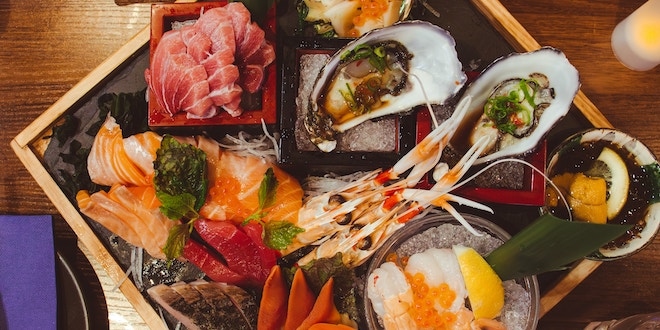
Image Credit: https://travelforfoodhub.com/australian-culinary-tradition/
Meat: Australia is known for its high-quality meats, particularly beef and lamb. The tradition of barbecuing is a significant part of Australian culinary culture. Sausages and steak are commonly grilled, and outdoor gatherings often feature barbecue feasts.
Seafood: Given its extensive coastline, seafood is a prominent feature of Australian dishes. Popular choices include prawns (shrimp), barramundi, Tasmanian salmon, and various types of shellfish. Fish and chips, a British import, are also a beloved classic.
Vegemite: A quintessential Australian food item, Vegemite is a dark, savoury spread made from yeast extract. It’s often spread on buttered toast or used in sandwiches. It has a strong and acquired taste that is an iconic part of Australian breakfasts.
Modern Australian Cuisine: In recent years, chefs have been redefining Australian cuisines by incorporating indigenous ingredients and culinary techniques into contemporary dishes. This movement has brought a fusion of traditional and modern elements to the forefront of Australian gastronomy.
Kangaroo meat: kangaroo meat is lean and packed with protein. It can be grilled, fried in a skillet, or used in stews and stir-fries among other preparation methods.
Chiko Roll: A popular fast food dish in Australia, the Chiko Roll is a deep-fried savoury roll packed with meat and veggies.
Tim Tams: Two layers of chocolate cream filling are sandwiched between chocolate biscuits to make these chocolate-covered biscuits. With a cup of tea or coffee, they are frequently relished.
Barbecue: Australians enjoy grilling, especially in the summer. Sausage, burgers, steak and grilled veggies are typical BBQ fare.
Australia’s local food scene is as diverse as its vast landscapes and multicultural population. From coastal seafood delicacies to bush tucker inspired by Indigenous traditions, Australian local cuisine offers a unique culinary experience that showcases the country’s rich cultural heritage and natural resources.
One of the highlights of local food in Australia is the fresh seafood. With its extensive coastline, Australia is home to a wide variety of fish and shellfish. From succulent prawns and delicate oysters to flavorful barramundi and Tasmanian salmon, seafood lovers can indulge in the bounty of the ocean. Whether enjoyed in a fish and chips shop by the beach or at a fine dining restaurant, Australian seafood is renowned for its quality and freshness.
Evolution of Australian cuisine
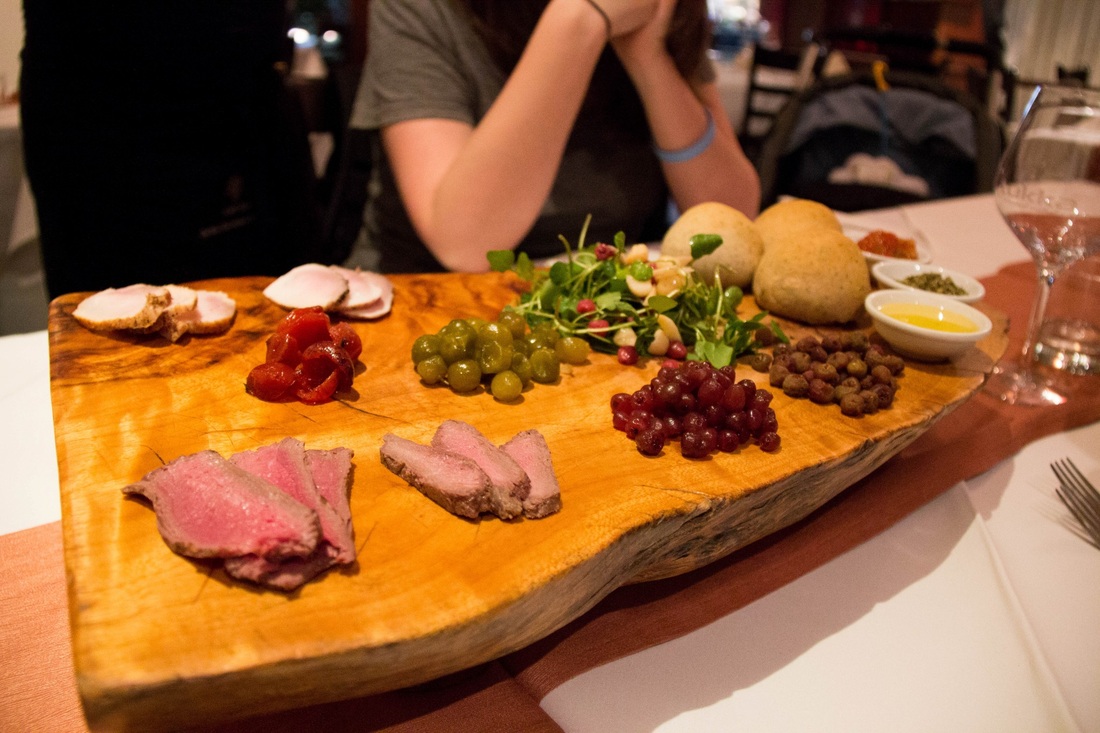 Image Credit: https://9foodies.weebly.com/evolution-of-australian-cuisine.html
Image Credit: https://9foodies.weebly.com/evolution-of-australian-cuisine.html
Aboriginal and Torres Strait Islander peoples have had a deep grasp of the land and its resources for thousands of years, utilising native foods such as kangaroo, emu, bush tomatoes, yams, and numerous bush herbs and spices. These ingredients were traditionally used in culinary methods such as earth oven baking, smoking, and foraging. Indigenous food practices have had a significant impact on the present Australian dishes, leading to a greater appreciation and integration of indigenous foods.
The evolution of Australian food has been an enthralling journey, shaped by an abundance of historical, cultural, and environmental influences. From its Indigenous beginnings, Australian cultural food has developed over time, embracing new flavours and ingredients.
The Native Australian food encompasses a diverse range of ingredients that were used traditionally by indigenous Australian people for a thousand years. Along with a unique flavour these foods have great nutritional properties. A lot of food in Australia represents the culinary traditions and dishes that are passed down through generations, which have a cultural and historical impact.
Traditional Australian foods include the following:
Damper:
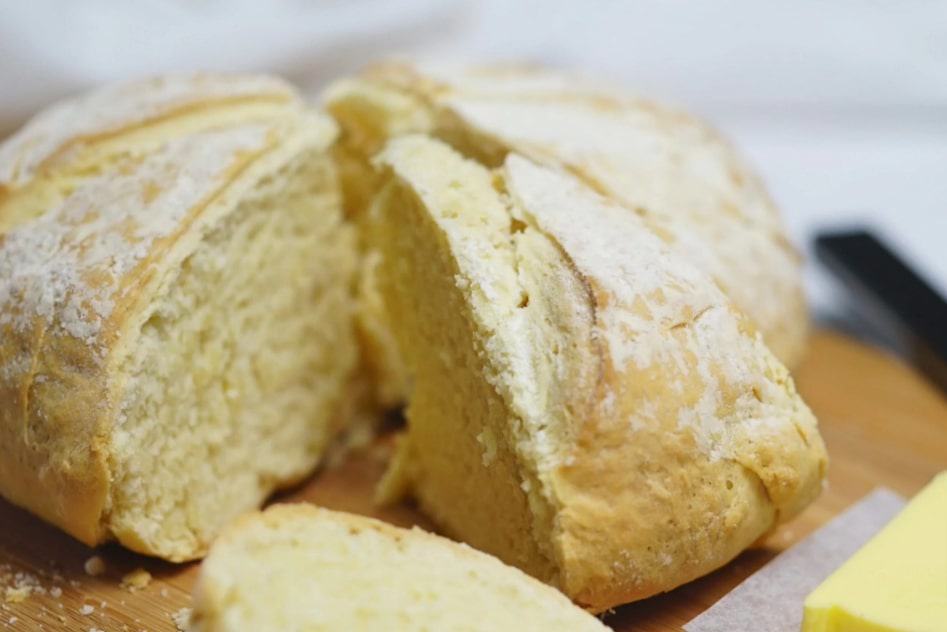
Damper is a basic bread baked in the Australian bush by European settlers and drovers. It is produced using simple components such as flour, water, and occasionally milk or butter. The dough is traditionally cooked over an open fire or in a camp oven, yielding dense and crusty bread.
Grilled Kangaroo Meat:
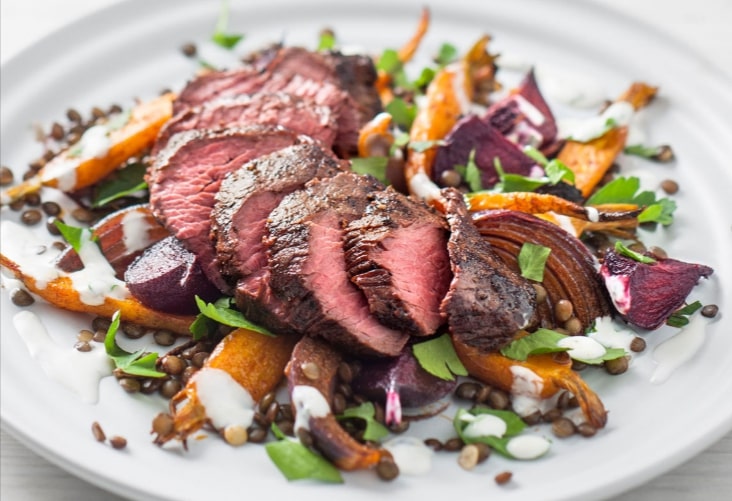
For thousands of years, Indigenous Australians have consumed kangaroo meat. It is a lean and gamey meat that may be served in a variety of ways, including grilling, roasting, and being used as mince in meals such as kangaroo burgers. Kangaroo meat has gained prominence as a sustainable meat choice due to its nutritional content.
Barramundi:
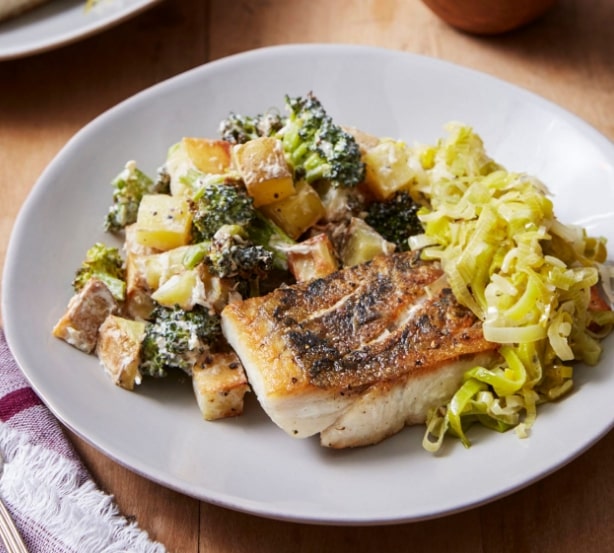
Barramundi is a well-liked fish that comes under the traditional food of Australia. It has a delicate flavour and crisp white flesh. Barramundi is frequently eaten with fresh vegetables or a citrus sauce and can be prepared in a variety of ways, such as grilling, baking, or pan-frying.
Australian Bush Tea:
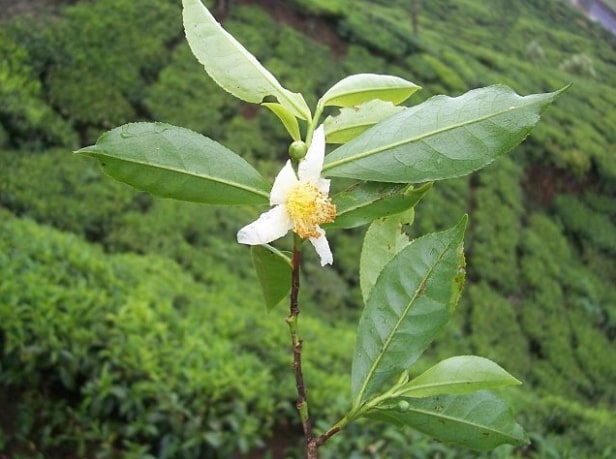
It is traditionally made using the Billy Tea method. It entails adding loose tea leaves to boiling water in a billy can, a small, lightweight metal container. After being prepared over a campfire, the tea is frequently paired with damper or other wild edibles. For indigenous communities, it holds cultural significance and is used for medicinal and nutritional benefits as well.
Pavlova:
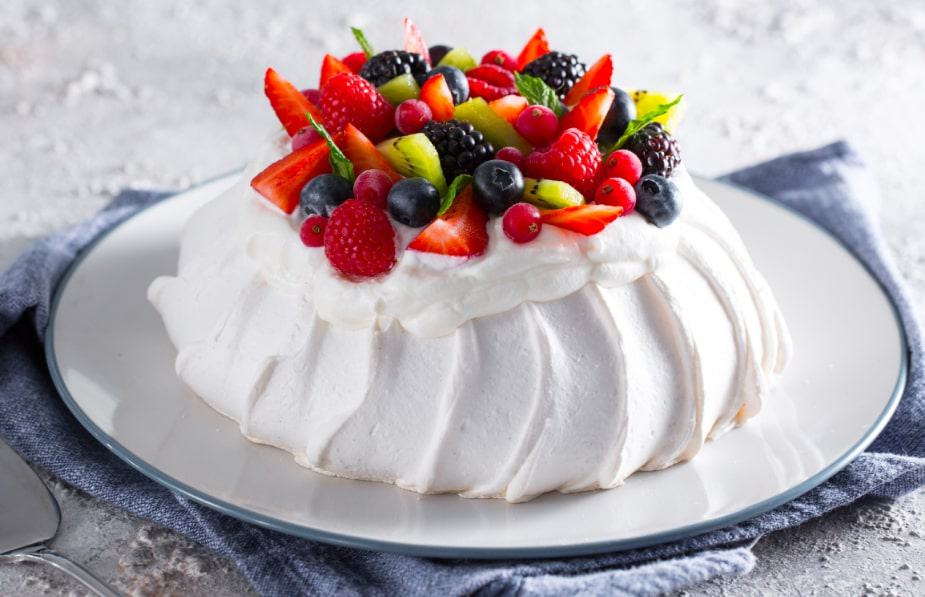
How Pavlova originated is still a debate between Australia and New Zealand. The exact origins cannot be shown correctly, but this iconic dessert is named after the renowned Russian ballerina Anna Pavlova. The dish was created as an offering by Australian chef Herbert Sasche. He offered a modern version of the dish that was presented to her when she was on a tour of Australia and New Zealand during the 1920s and 1930s. Pavlova became popular in Australia and was a staple on many dessert menus.
Meat Pies:
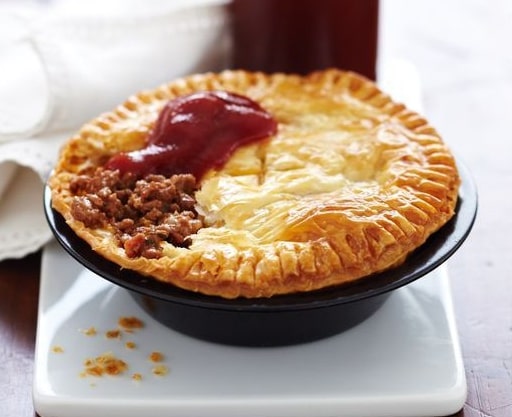
Australians are meat lovers, and they are always on the lookout for meat-filled dishes to satisfy their cravings. To satisfy their hunger, they have come up with new dishes, and meat pie is one of them, which is a popular Australian food. This traditional food comes with different types of fillings, and the most basic ones include potatoes, mushrooms, meat, and onions that can please your taste buds and keep you satisfied. Meat pies are enjoyed with drinks, and these are often spotted on plates during dinner and lunch.
Fish and Chips:
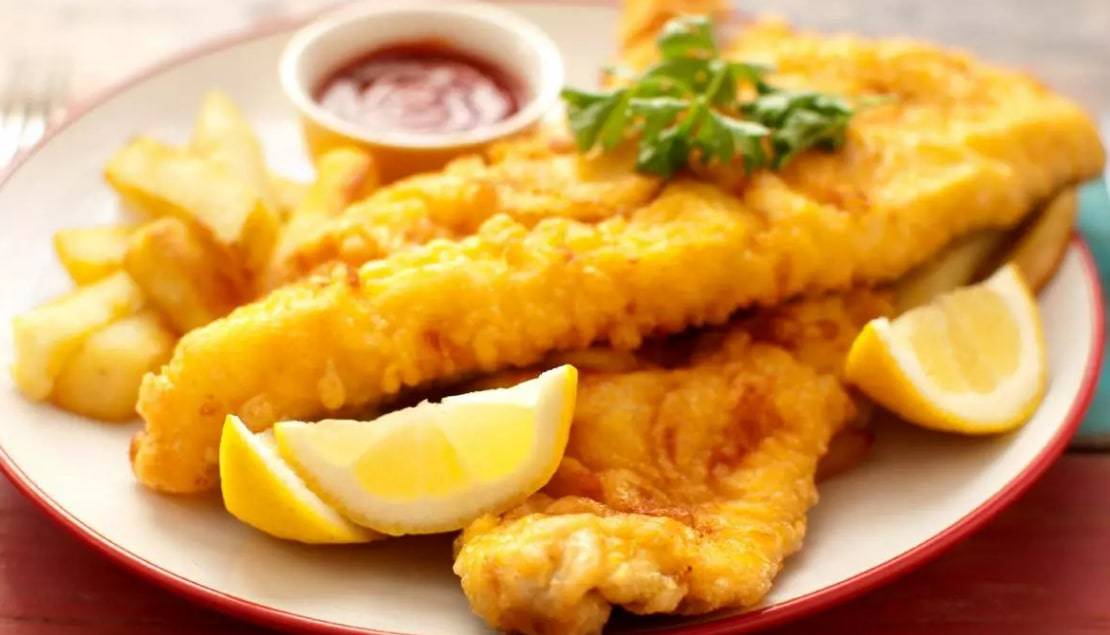
It’s important to note that the traditional foods of Australia’s indigenous peoples have immense cultural significance and are closely tied to the land, spirituality, and community practices. These foods have been passed down through generations and are still honoured and appreciated by indigenous communities today.
Lamington:
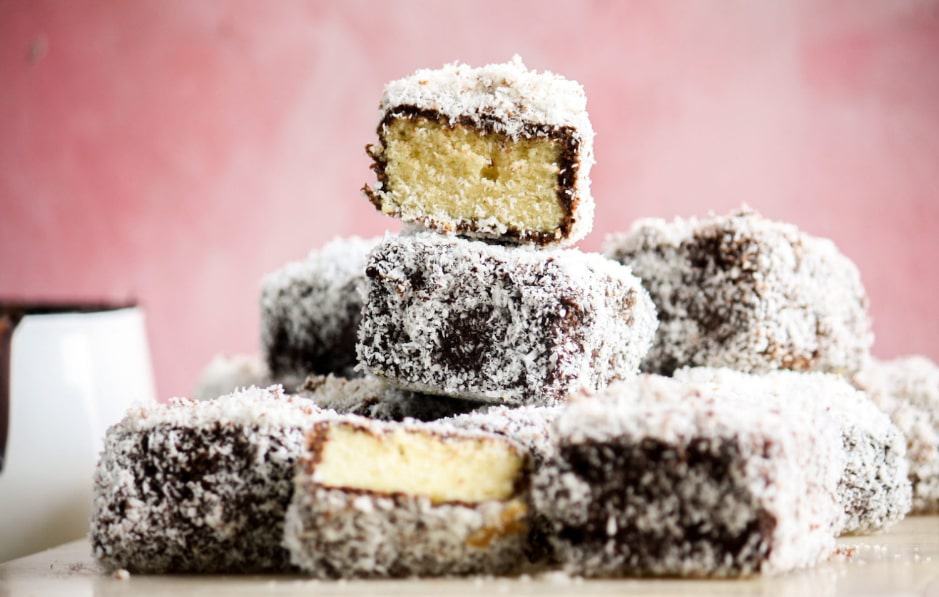
Lamington is a classic Australian dessert that has a rich cultural history, and its origin is somewhat debated. The history of Lamington is quite interesting, where a cook at the government house accidentally dropped sponge cake pieces into chocolate and then coated them with desiccated coconut so cake wastage could be avoided. Lord Lamington enjoyed the pieces, and hence the dessert was named in honour of him. There are other stories behind the origination of the dish, it gained popularity in Australia in 2006 when July 21st was declared “ National Lamington Day” in Australia, celebrating this beloved dessert.
Barbeque Snags:
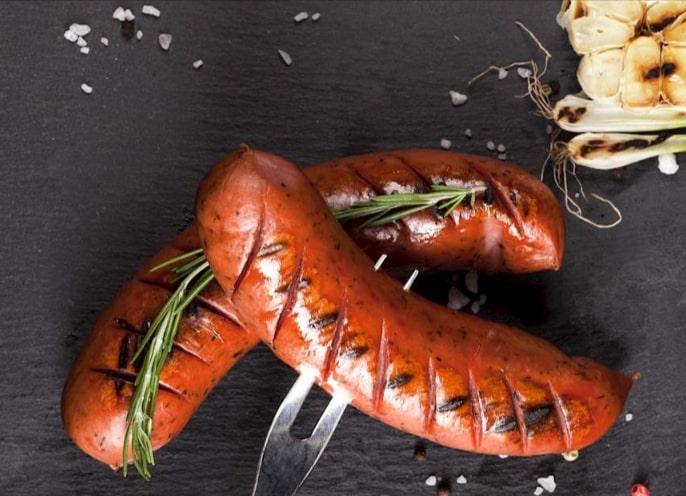
Barbeque snags are a short form of barbeque sausages which have a special place in Australian culinary culture and are associated with social events, outside gatherings, etc. It has been a significant part of the Aussie lifestyle and the cultural history is related to the evolution of outdoor cooking practices, immigration history, and the colonial past of Australia. Sausages were a convenient and hearty choice of food that could be cooked easily on the open flame and they also represent a laid-back and convivial culture of Australia.
Chicken Parmigiana is an iconic dish that evolved from Italian American culinary traditions, and now it has made its way onto the menus of Australians. Australians like this dish, and it is common in the country’s pub culture. The journey of this dish from Italian immigrant communities to Australian pubs manifests how food can transcend cultural boundaries and be a vital part of local culinary landscapes. It is often served with pasta and is a satisfying dish for those who enjoy the flavours of melted cheese and tomato sauce.
Native Australian food
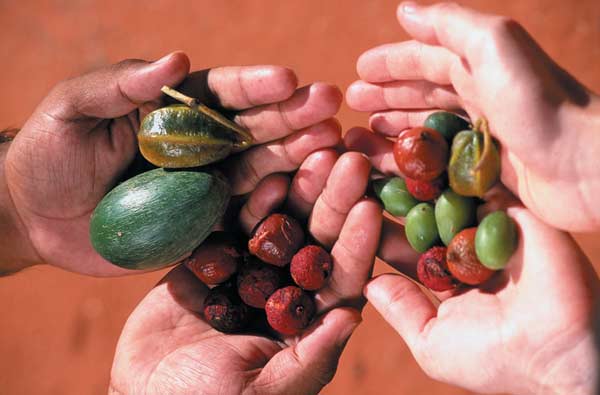
Image Credit: https://en.wikipedia.org/wiki/Bush_tucker
After traditional cuisine, there is Australia’s native cuisine. Native Australian food, often referred to as “bush tucker,” encompasses unique plants and animals. These foods have sustained Aboriginal and Torres Strait Islander communities for thousands of years and are now gaining recognition in modern Australian cuisine due to their distinctive flavours and nutritional benefits.
Whether you’re exploring the tangy delights of native fruits like quandong and finger lime, savouring the lean and flavorful kangaroo and emu meats, or indulging in beloved classics like meat pies and Vegemite toast, Australia’s culinary landscape offers an enticing culinary journey for food lovers, a testament to its cultural heritage and innovation.
Final Thoughts..
Thank you for showing an interest in Aussie food and wanting to learn more! Due to its diversified population and abundance of premium ingredients, Australia has developed a distinctive culinary culture. It does not matter whether you prefer fusion cuisine, traditional Australian cooking, or international flavors; you will always find something that appeals to you in Australia.
The post Traditional Foods Of Australia and The History appeared first on TheAussieway.
]]>The post Chefgood – Best Healthy Meal Delivery Service Provider In Australia appeared first on TheAussieway.
]]>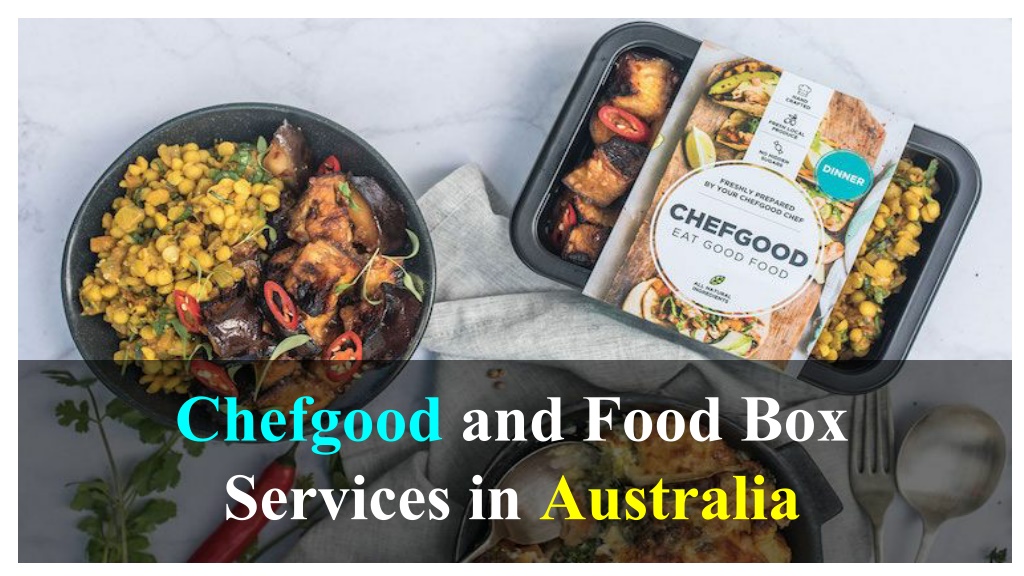
Image Credit: https://www.slideserve.com/the_aussie_way/chefgood-best-healthy-meal-delivery-service-provider-in-australia
Healthy eating may feel like a Herculean task at times, especially when you hear junk food sirens in the background. However, meticulously designed healthy meal plans can make things different. Chefgood has entered the culinary battleground, introducing some delicious and healthy meal plans to meet the varied tastes of people in Australia.
Chefgood is Australia’s premier meal plan service that strays from conventional options and offers a unique blend of flavors and nutrition. They are a restaurant-style meal delivery service and hence offer whole foods combined with restaurant-quality recipes that can be delivered straight to your doorstep at your convenience.
With Chefgood, you can experience a revolution in the meal industry where the company has come up with amazing meal plans to please the taste buds of Aussies.
Chefgood meals are cooked by real-life chefs based in Melbourne, and they make use of locally sourced ingredients for the best flavors. Unlike other companies that tend to stick with set meal plans and menus, Chefgood provides you with something different every week.
Benefits of food boxes:
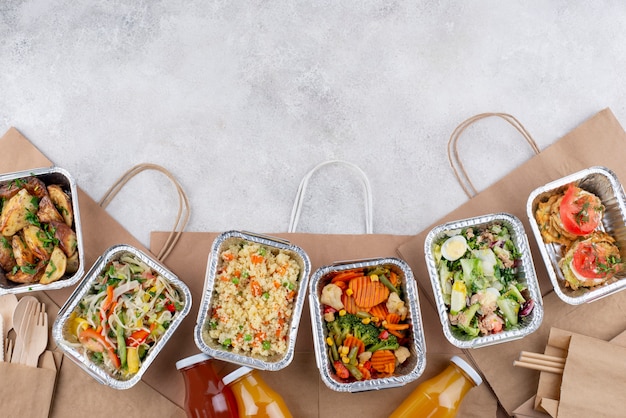
According to Aussie lifestyle , what is the food habbit they got? Chefgood understands that Aussies have different health goals, and they come up with an ever-evolving range of handcrafted meals that are designed by expert cooks so your different needs can be met effectively. You may have a different lifestyle and your health goals may differ, but these healthy meal plans are created to bring a perfect balance of nutrition and great taste into your life. Enjoy popular dishes and choose calorie-controlled meals to support your weight loss goals.
Those who embrace plant-based diets can benefit from their ultimate vegan meal plans, which are full of variety and taste that you cannot miss. If you are seeking to cut down on certain ingredients or some flavor, then Chefgood is the right choice; they understand your meal preferences. Want no added gluten or dairy meal plans? Chefgood has got you covered.
The food boxes offered by Chefgood are planned precisely and they are designed to offer
- Nutrition and Taste: Enjoy the perfect combination of flavor and health with Chefgood crafted meals
- Variety: The menus change weekly, and you can expect a diverse culinary experience that you will enjoy with every food box delivered to your doorstep.
- Meets different people’s goals of people: We are all different, so how can our meals be the same? Whether you are looking to lose some pounds, want to try vegetarian delights, or prefer gluten-free or dairy-free options, Chefgood tailors the meals in the best way to meet your demands.
- Meets the needs of families and couples: Perfect for families and couples who choose healthy and nutritious meals to stay fit and healthy. You can choose to build your meal plan and meet the needs of everyone on a daily basis.
- Top quality Ingredients: No matter what type of meal plan you choose, the meals are handcrafted by real-life chefs, and you get the highest quality seasonal ingredients from local sources. Always fresh and full of flavor. There is nothing nasty in the meals that can affect your health. No added sugar as well.
Do Food Boxes Save Money?

Yes! The meal options provided by Chefgood are a cost-effective solution that is easy on your pocket. You don’t have to go grocery shopping or spend time cooking with different ingredients. Imagine the expense of food when you plan to dine out. You need to get ready and drive or use local transport to reach the restaurant. The noise, traffic, and various other things can be bothersome. You can cut down on so much unwanted stuff and save time simultaneously. All you need to do is open the meal box and enjoy your tasty food in the comfort of your home.
With a minimum spend of $75 per week, you can enjoy healthy and delicious meals cooked by renowned chefs. You can get attractive discounts as well. The more you order, the more you will save. Choose weight loss plans or everyday meal plans that will meet your budget and give you complete satisfaction at the end.
How Does Chefgood Work?

The meals are handcrafted, and renowned chefs prepare the meals using quality ingredients. They choose the produce as per the season and what is available locally. You can enjoy a nutritious punch that is succulent and not boring at all. The meals will keep you satisfied, and there is no added sugar. All the meals are packed with care and cooked using fresh ingredients, so you will never be disappointed.
Chefgood works in four simple steps
Step 1- Select your meal plan, which can be non-vegetarian, vegetarian, vegan, high protein, etc.
Step 2- Subscribe and place the order. Make changes to the menu selection every week before the weekly cut, and you will be informed about this on the customer dashboard. Chefgood’s online subscriptions are easy as there are no lock-in contracts. You can opt-out anytime.
Step 3- Finally, your order will be delivered to your place.
Step 4 – Just sit back and relax to enjoy your nutritious meals. You will save yourself from cooking or washing the utensils.
CEO and Ownership:
The Cofounder and CEOs of ChefGood are Michelle and Susan
Michelle – She has 25 years in the food industry and believes that delicious food can be healthy as well as cost-effective. She was inspired by the balance, lightness, and seasonality of Italian cuisine during her yearly visits to Italt and offers a wealth of culinary knowledge to Chefgood. Her health goal is to be fitter in her 50s than in her 20s and her favorite Chefgood meal is vegetarian Moussaka
Susan – On the other hand, Susan is a celebrated Melbourne foodie who has more than 35 years of culinary experience in Melbourne, San Francisco, and London. She is well known for her work as a fine-dining chef. She was a pioneer of prepared meals in Australia and focused on delivering homestyle but high-quality foods to her customers. Her favorite Chefgood meal is Green Sambal Chicken and her health goal is to continue living a full and happy life.
Are Chefgood Good meals healthy?
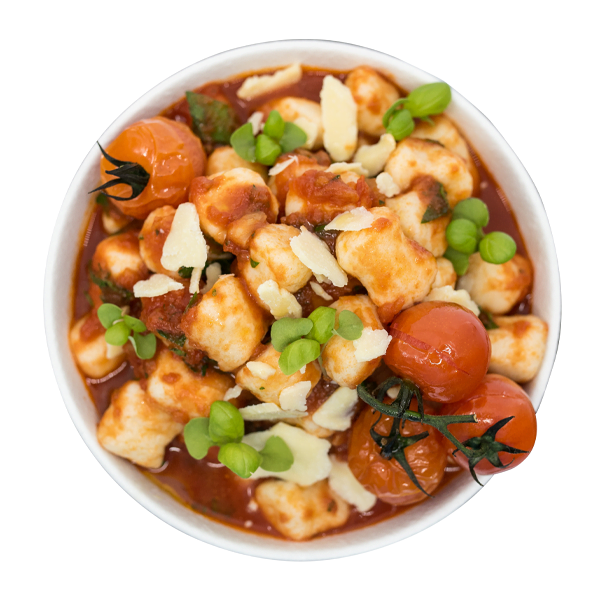
Absolutely! Chefgood prioritizes health, and they make use of whole grains and locally produced ingredients. They choose seasonal food to cook the meals and craft them intelligently to meet the different needs of Australians. They cater to various dietary needs, and the leams are ideal for weight loss, staying fit, maintaining a vegetarian and vegan lifestyle, or choosing a gluten/dairy-free lifestyle.
Chefgood boxes and popular meal plans:
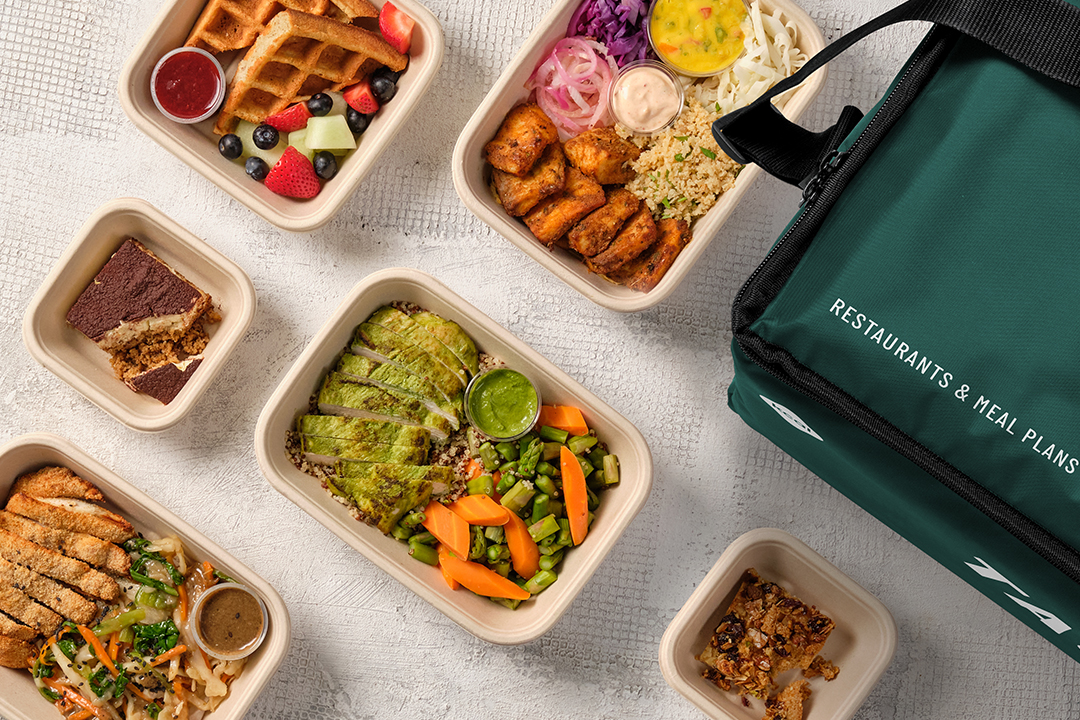
Image Credit: https://www.eajkv.shop/?ggcid=2032926
There are so many delectable options that will please your tastebuds. Popular meal plans can be customized as per your needs, and you can select weight loss, no added gluten, vegan, vegetarian, and no added dairy meal options. There is something for everyone. The meals are designed by popular chefs and nutritionists so you can maintain your body and weight in your busy lifestyle.
Chefgod offers three types of meal plans:
- Build your plan – Mix and match your meal plan by choosing your favorite dishes. You can add breakfast, drinks, and snacks to your menu and complete the healthy meal plan. Pick from both regular and 350-cal size meals to suit your dietary requirements. Choose vegan, non-vegetarian, high protein, low carb, gluten-free or dairy-free meals as you want.
- Everyday Wellness – Choose different meal packages. You can choose 5 meals, 7 meals, 10 meals (5 lunches + 5 dinners), or 14 meals (7 lunches + 7 dinners). You have the option to choose from the most popular meals, which include bleach bean beef and vegetables, smoked cheese and Pico De Gallo Quesadilla, Nonna’s Lasagna, and much more.
- Slim and Trim – You can start your weight loss goals and see great results. Enjoy portion-controlled meals that are designed to keep you fit. Choose different meal packages. You can choose 5 meals, 7 meals, 10 meals (5 lunches + 5 dinners), or 14 meals (7 lunches + 7 dinners). You can go for a mainstream diet that is low in carbs with 350 calories and contains protein-rich lean meats like chicken, fish, beef, and lamb. Vegan diets or vegan weight loss meal plans are also available. Enjoy plant-based proteins and veggies like beans, tofu, lentils, chickpeas, quinoa, etc. The variety is endless. Choose nutritionally balanced vegetarian meal plans for weight loss, which include yoghurt, ricotta, and feta cheese.
Fresh or frozen? Can I freeze Chefgood?
Chefgood believes in freshly designed meals and ingredients, so they choose locally sourced ingredients and the meals are not frozen, but if you feel like freezing the meals to consume them the next day, then you have the option to do so as well.
Does Chefgood change their menu?

Yes! Chefgood believes that things should never be mundane for their subscribers, so they keep things exciting and come up with quality menu options that subscribers can choose to change weekly. You can choose mainstream diets that are low in carbs and a 350-calorie meal. The mainstream diet contains lean meats like beef, chicken, fish, beef, and lamb.
Vegan diets are also 350 calorie diets, which are ideal for weight loss and include high-quality plant-based proteins and veggies. They offer controlled portion sizes. They offer a lot of variety in many ways and use fresh ingredients to suit the dietary requirements of everyone. Choose to eat tofu, tempeh, lentils, etc.
The slim and trim vegetarian diet consists of a large variety of meals that are made from quality ingredients and include plant-based proteins in the vegan range. For meat protein alternatives, there is the option of eggs, feta cheese, ricotta, and yogurt. Weight loss meal plans are designed for vegetarians, nonvegetarians, and those who choose vegan options. There is something for someone.
For more information and to embark on a culinary journey, visit Chefgood.
Contact – 1300 911 595 or email support@chefgood.com.au for any inquiries or support.
The post Chefgood – Best Healthy Meal Delivery Service Provider In Australia appeared first on TheAussieway.
]]>The post Poisonous Mushrooms Making Story In Australia You Should Avoid appeared first on TheAussieway.
]]>
Killer Mushroom Tale – An unfortunate accident

A routine family lunch took a deadly turn when three relatives of the family lost their lives due to fatal poisoning. The close-knit Australian community was shocked by the tragic deaths, as the desperate attempt was just to mend an unhappy marriage.
Erin Patterson, a 48-year-old resident of a rural town in Victoria, was hosting a simple family gathering. Erin invited her former partner, Simon Patterson, along with his parents, Gail and Tom Patterson, aged 70. Gail’s sister Heather Wilkinson and her husband Ian, aged 68 also accompanied them to enjoy the meal together as a family. The gathering was an effort to win back the affection of the estranged husband, Simon Patterson, but the ill-fated meal resulted in a ripple effect, leaving the community in pain and sorrow.
Simon Peterson decided to leave the gathering at the eleventh hour, but things took a drastic turn right after that. The intention was to have a friendly meal, but when it turned into a tragedy, it was pretty disheartening for the family members. The tragic deaths of Gail, Tom and Heather occurred within a week. On the other hand, Heather’s husband, Ian Wilkinson, is still fighting for his life in the confines of a hospital room. His situation is quite critical at this moment.
Erin Peterson is being questioned by the authorities because of the distressing outcomes of the event. The officials have executed the investigation to understand the cause of the deaths, which indicated that the ingestion of death cap mushrooms is the reason, as these are the most poisonous mushrooms globally.
The heartbreaking incident has impacted Australians with disbelief, and law enforcement authorities are still conducting an investigation to understand whether the incident was an unfortunate accident or whether there is a complex narrative hidden under the surface.
Read full story Sources: https://www.dailymail.co.uk/
What Caution does the Australian Mushroom Growers Association (AMGA) urge in wild mushroom foraging?

As per the Australian Mushroom Growers Association survey in Australia, they discourage the harvesting of wild mushrooms because it carries some dangers and risks that can cause adverse results. Hence, foraging must be conducted under the supervision of a well-known and qualified mycologist who has knowledge of fungi.
Many mushrooms sprout during cooler seasons, even in the residential gardens of Australia, but when it comes to the growth of wild mushrooms things need to be managed with care and precaution. Even specialists may have trouble determining whether wild mushrooms are suitable for consumption because they can resemble the common ones sold in stores. Only reputable stores or authorized farmers’ markets should be preferred for purchasing Australian-grown mushrooms, urges AMGA.
Commercially grown mushrooms adhere to strict rules and regulations on food safety. Hence, these are safe to consume and are made of high quality, which minimizes the risks of health hazards and allows consumers to enjoy healthy mushrooms from a reliable source.
A deadly insight into the world’s most poisonous mushrooms
The intricate tapestry of nature and beauty is alluring to the eye, but some dangers do coexist with it, and sometimes these dangers occur in the most unexpected places. The fungal kingdom does pose some dangers, and there are some harmless mushrooms that have been consumed by humans dating back to ancient civilizations.
Mushrooms have been a delicacy since ancient times, but they also conceal a deadly secret too. Some of the mushroom species are very poisonous, and poisonous mushrooms can pose grave dangers to individuals who consume them. It is life-threatening, so let’s take a look at these species of mushrooms:
1. Death Cap (Amanita phalloides)
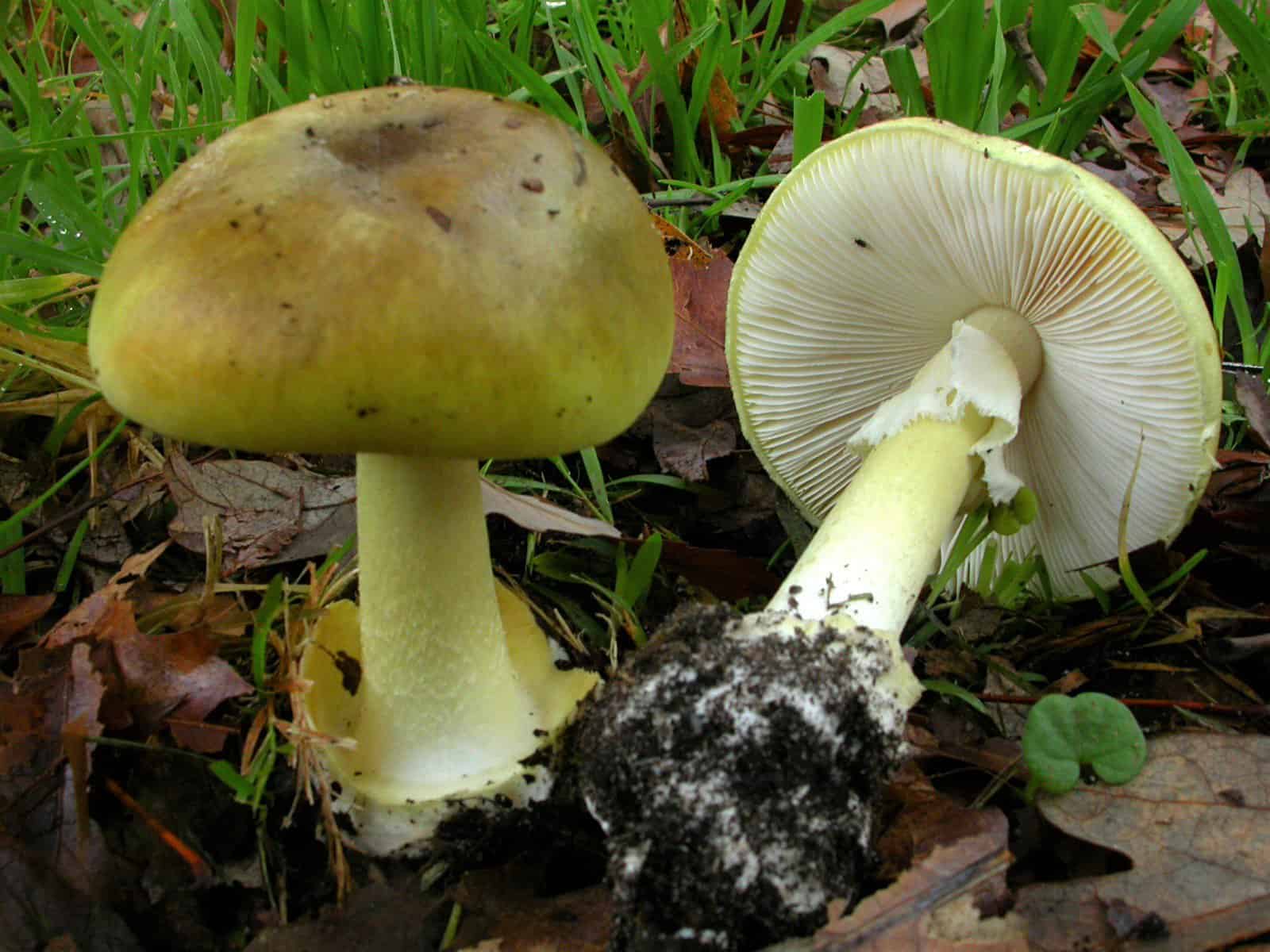
One of the deadliest mushrooms, death caps are prevalent in Europe and resemble both edible straw mushrooms and caesar mushrooms. A Death Cap mushroom can withstand high cooking temperatures and damage cells throughout the body. It can lead to abdominal pain, vomiting, and bloody diarrhea, which leads to rapid loss of fluid from the body and intense thirst. It lowers blood sugar levels in the body, and the condition can lead to coma and death. In 1534, Pope Clement VII died of accidental death by poisoning.
2. Conocybe Filaris:
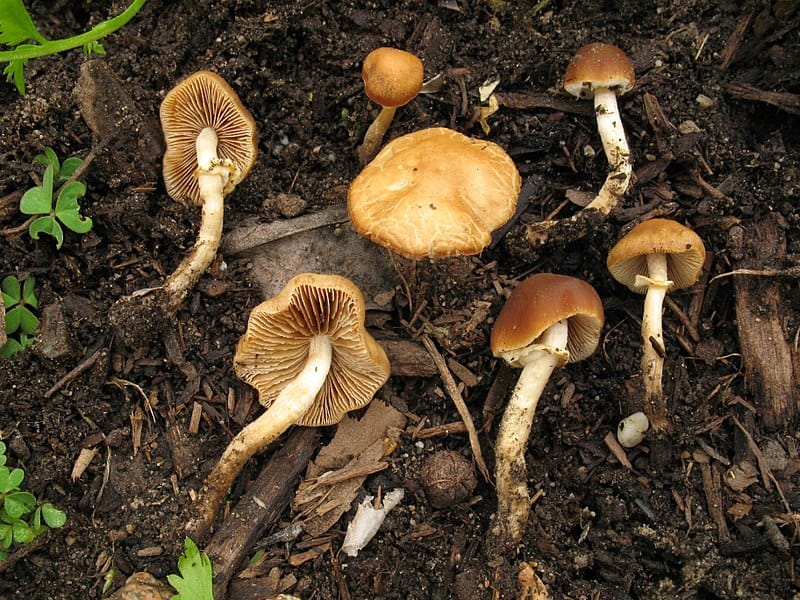
It is a lawn mushroom common in the Pacific Northwest which has the same mycotoxins found in death cap mushrooms. After 6 to 24 hours of consumption, it can cause gastrointestinal symptoms leading to stomach flu. The patient may experience gastrointestinal symptoms that can be accompanied by liver and kidney failure.
3. Webcaps (Cortinarius species):

The fool’s webcap and deadly webcap are two categories of this species and these are similar to the edible varieties. They have a poison named Orellanine that causes flu-like symptoms and eventual kidney failure. It has a long latency period, so this does not affect the consumer immediately or in a few hours; it may take 2 days to 3 weeks to show the symptoms, and mostly it leads to misdiagnosis.
The toxin can lead to kidney failure, ultimately resulting in death. In 2008, Nicholas Evans, an English author, mistakenly served the webcap mushrooms to his relatives, and four of them were hospitalized. This poisoning resulted in a lot of damage, as he, his wife, and his brother-in-law needed kidney transplants.
4. Autumn Skullcap (Galerina Marginata)
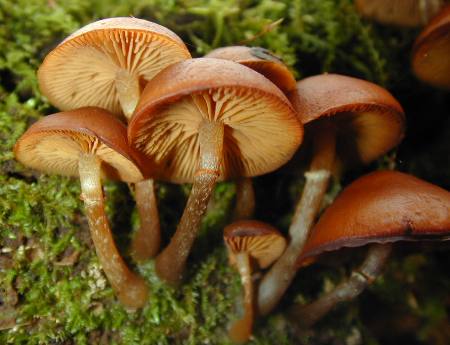
It is a gilded, wood-rotting fungus that only occurs in the Northern Hemisphere and carries the same amatoxins as the death cap mushroom. When ingested, it causes diarrhoea, liver damage, and vomiting, and if not dealt with swiftly, it can also result in death.
5. Destroying Angels (Amanita species):
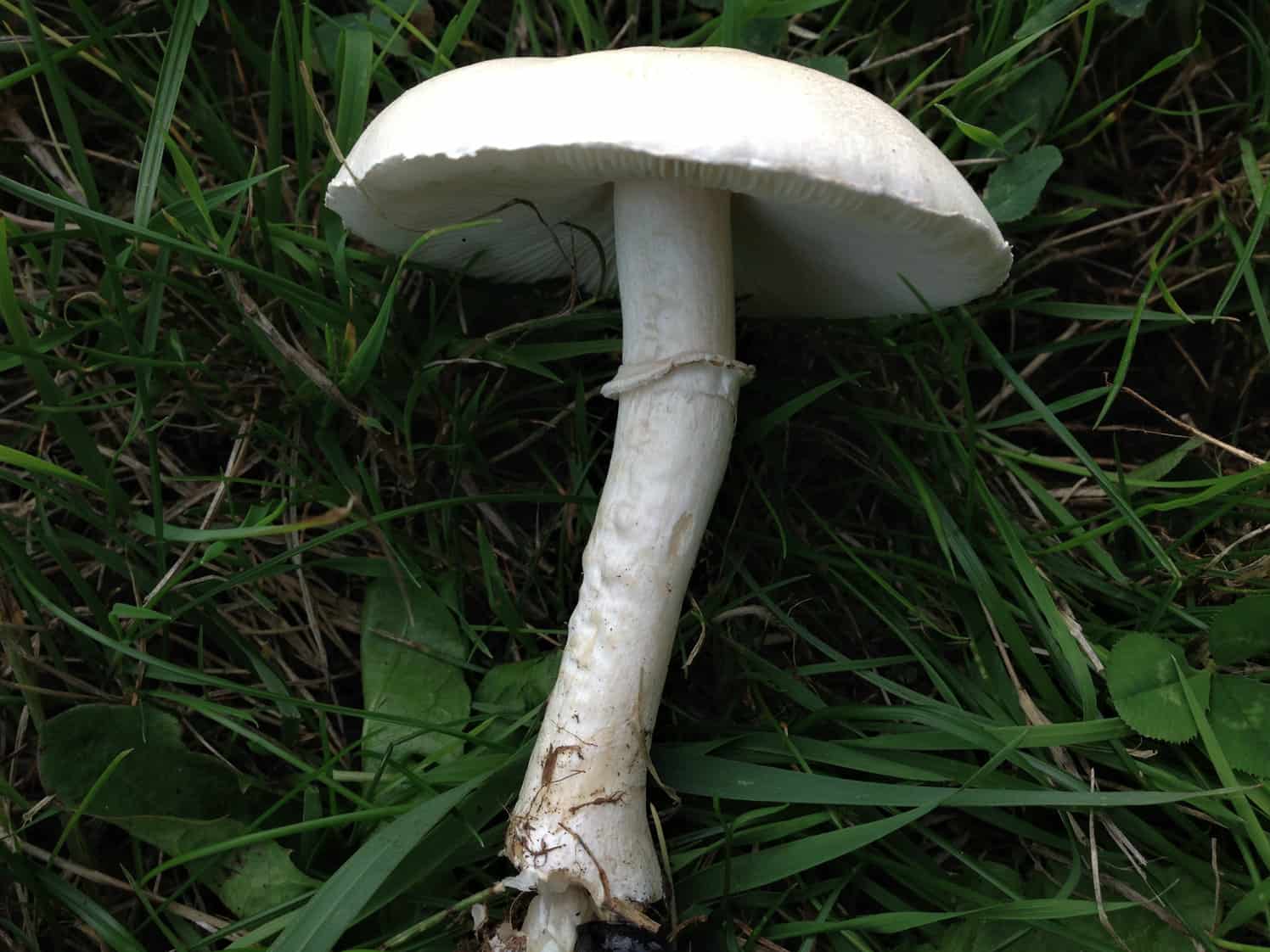
The toxic destroying angels are an assortment of species of all-white mushrooms in the Genus Amanita that resemble meadow and button mushrooms but are poisonous. The most toxic species in North America is Amanita Bisporigera, which was possibly inadvertently detected multiple times. The signs and symptoms could manifest in five to twenty-four hours and could result in vomiting, convulsions, liver and renal failure, delirium, and even death.
6. Podostroma cornu-damae:
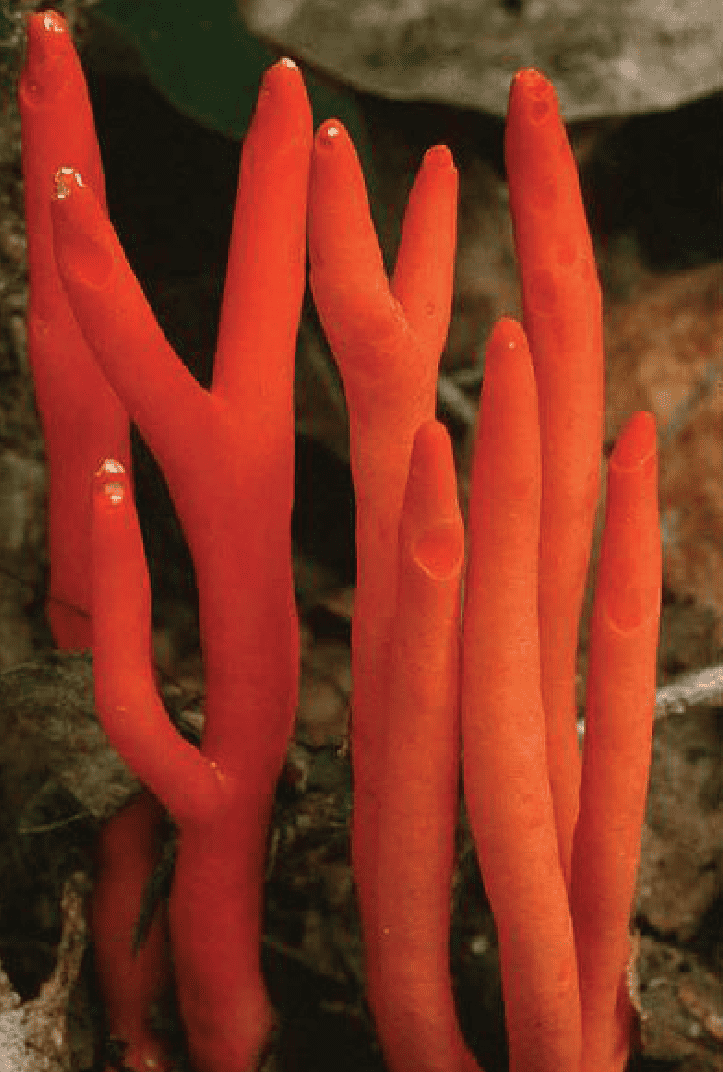
Podostroma cornu-damage is a rare fungus which is native to Asia and has caused many fatalities in Korea and Japan. It has a red fruit body and contains potent toxins trichothecene mycotoxins and can cause multiple organ failure on consumption. Some symptoms are low blood pressure, stomach pain, peeling skin, liver necrosis, and acute kidney failure and if not treated on time can lead to death as well.
7. Deadly Dapperling (Lepiota Brunneoincarnata):
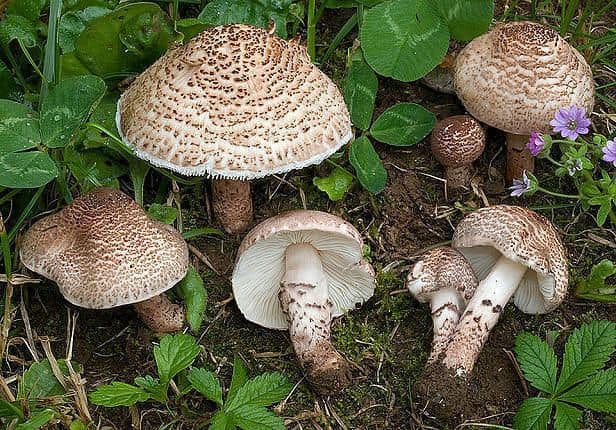
This is a deadly Dapperling gilled mushroom that contains amatoxins and is available in Europe and parts of Asia. It is mistaken for edible varieties, and its toxic core is not very common. When consumed, it leads to severe liver toxicity and lethal consequences.
There are many narratives of nature’s hidden dangers, which serve as an essential reminder to be constantly vigilant when consuming mushrooms. The enigmatic beauty of nature is undeniable, but cautious appreciation can help you save your life and also protect your loved ones from mushroom poisoning.
The post Poisonous Mushrooms Making Story In Australia You Should Avoid appeared first on TheAussieway.
]]>The post What Is Food Insecurity? How Australian Are Suffering From It? appeared first on TheAussieway.
]]>
The Aussie lifestyle is also characterized by a love of food and drink, with a diverse culinary scene that reflects the country’s multiculturalism. Barbecues, or “barbies,” are a staple of Australian social life, and Australians enjoy a range of international cuisines as well as local specialities such as meat pies and Vegemite. Though Australia is known for having a high standard of living and, for the most part, access to some of the best foods on earth, you might be surprised to hear that Australia is also a country with food insecurity.
The phrase “food insecurity” refers to the inability of people or households to regularly obtain sufficient and nourishing food. It is a complicated problem that has a global impact, including in Australia. Australia, one of the richest nations in the world, still suffers from food insecurity, with a sizeable percentage of the population finding it difficult to regularly access nutritious food. In this article, we will explore the definition of food insecurity, the causes of food insecurity in Australia, and the impact it has on the Australian population.
What is food insecurity?

When people or households do not have enough food to satisfy their nutritional needs for an active and healthy existence, this is known as food insecurity. It can be caused by various factors such as poverty, unemployment, low wages, inadequate social security, and limited access to food outlets.
According to a report by the Australian Bureau of Statistics, food insecurity affected about 4% of Australian households at some point in the years 2017–2018, which is a growing concern in Australia. However, since not all households suffering from food insecurity may report it, the actual level of food insecurity in Australia may be higher.
Food Insecurity in Australia
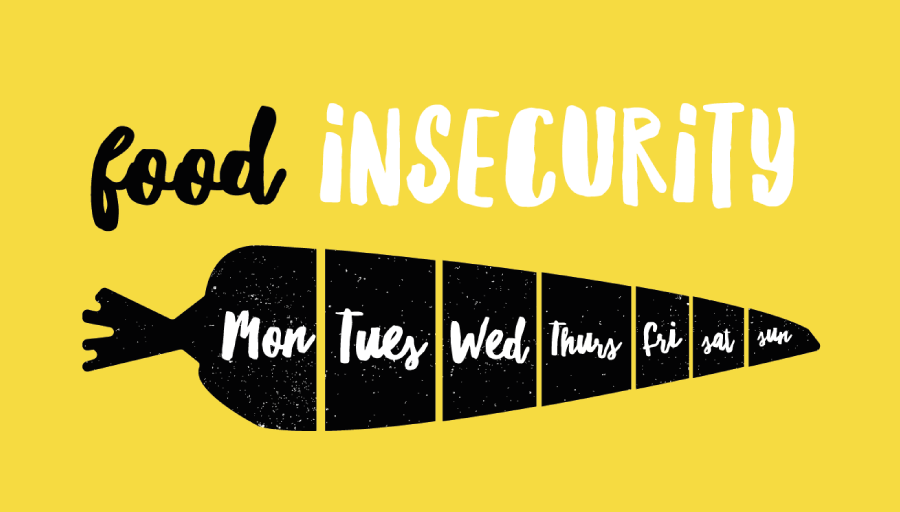
Recent studies have shown that there is a rising problem of food insecurity in Australia, affecting about 5% of the population. These figures might understate the severity of the issue, though, as many people and families might be hesitant to ask for assistance out of fear of embarrassment or stigma.
Economic inequality, unemployment, high food costs, and restricted access to healthy food choices in some areas are some of the factors influencing food insecurity in Australia. Additionally, certain populations are more likely to experience it, including low-income families, single-parent homes, and Indigenous Australians.
According to a report by the Foodbank Hunger Report 2021, more than 1 in 5 Australians (21%) have experienced food insecurity at some point in the past 12 months. The report also found that the COVID-19 pandemic has exacerbated food insecurity, with more than one-third of Australians experiencing food insecurity reporting it for the first time due to the pandemic.
There are several reasons for food insecurity in Australia. One of the main causes is poverty. Many low-income individuals and families are unable to afford nutritious food and may rely on cheap, unhealthy options instead. According to a report by the Australian Council of Social Service (ACOSS), over 3 million Australians live below the poverty line, with many struggling to afford basic necessities such as food, housing and healthcare.
Food insecurity has a range of social impacts in Australia, particularly for those who are marginalized or living in poverty. Some of the key social impacts of food insecurity in Australia include:
- Health impacts: Food insecurity can lead to poor health outcomes, including malnutrition, obesity, and diet-related diseases such as diabetes and heart disease. Children who experience food insecurity are also more likely to experience developmental delays and poor academic outcomes.
- Social exclusion: Food insecurity can contribute to social exclusion and marginalization, particularly for those who are already vulnerable or marginalized. This can make it difficult for individuals and communities to fully participate in Australian society.
- Poverty: Food insecurity is closely tied to poverty, and can contribute to a cycle of poverty and social exclusion. Those who are food insecure may struggle to afford basic necessities such as rent and utilities, and may also experience other forms of material hardship.
- Mental health: Food insecurity can have negative impacts on mental health, leading to stress, anxiety, and depression. This can be particularly true for parents who are unable to provide sufficient food for their children.
- Environmental impacts: The food system is a major contributor to greenhouse gas emissions and environmental degradation, and food waste is a significant issue in Australia. Addressing food insecurity while promoting sustainability is an important challenge for society.
- Indigenous health: Indigenous Australians experience higher levels of food insecurity than the broader population, and this can have significant impacts on Indigenous health. Indigenous Australians experience higher rates of diabetes, heart disease, and other diet-related health issues than the broader population.
Causes of food insecurity in Australia

Many underlying factors contribute to food insecurity in Australia, making it difficult for people and households to access or afford enough food to satisfy their basic nutritional needs. These root causes for food insecurity have many facets and are susceptible to a variety of societal, economic, and environmental influences. Some of the main reasons for food instability in Australia are listed below:
- Poverty: Low-income households in Australia are more likely to experience food insecurity due to poverty, which is a major contributor to the problem. Unemployment, underemployment, poor wages, and a lack of access to education and training are just a few of the complex causes of poverty. Lack of money brought on by poverty can make it difficult for families to buy enough food.
- High food prices: Food is expensive in Australia, particularly when it comes to wholesome and nourishing choices. Low-income households may find it challenging to get the food they require to keep a healthy diet as a result. Food waste can also be a result of high food prices, which may cause households to discard food that they cannot afford to eat.
- Limited access to wholesome food choices: Access to wholesome food options is a problem in many communities, particularly those that are rural or remote. The lack of supermarkets and grocery stores, the scarcity of public transportation, and the high expense of transportation may all contribute to this. Food insecurity can be exacerbated by households finding it challenging to keep a healthy diet due to a lack of access to healthy food options.
- Food waste: Up to 40% of Australian food production is lost or squandered, making it a serious issue in Australia. Throughout the food system, including during manufacturing, distribution, and consumption, food waste is possible. By lowering the quantity of food that is available for consumption, food waste can exacerbate food insecurity.
- Climate change and environmental degradation: These two factors can have a significant effect on the availability and production of food. Droughts, floods, and other extreme weather conditions brought on by climate change may harm crops and lower food output. Food insecurity is a result of environmental degradation such as soil erosion and river pollution, which can also lower food output.
- Systemic inequalities: By limiting access to chances and resources, systemic inequalities like racism, sexism, and classism can cause food insecurity. For instance, Indigenous Australians, who have traditionally been marginalised and deprived of their basic rights, are more likely to suffer from food insecurity due to their restricted access to opportunities and resources.
Food insecurity in Australia disproportionately impacts certain groups of people, particularly those who are marginalized or living in poverty. Some of the most impacted groups include:
Indigenous Australians:

Indigenous Australians are one of the most disadvantaged groups in Australia and are more likely than non-Indigenous Australians to face food insecurity. Approximately 20% of Indigenous Australians suffer food insecurity, compared to 4.6% of non-Indigenous Australians, according to the Australian Bureau of Statistics.
The historical marginalisation of Indigenous Australians, the difficulty finding affordable, wholesome food in remote regions, and the effects of colonisation on Indigenous food systems and practises are just a few of the causes of this disparity.
Low-Income Households:
Recent studies have shown that low-income families are also more likely to experience food insecurity, with up to 30% of those making less than $600 per week reporting such a condition. This is a result of Australia’s high cost of living, which includes high housing costs and sometimes leaves little money for other needs like food.
Single-Parent Households:
Another group that is more vulnerable to food insecurity is single-parent households; according to recent research, up to 25% of single-parent households experience food insecurity. This is brought on by the financial burden of raising children alone and the lack of readily available, inexpensive, and wholesome food choices.
The Impact of COVID-19:

In Australia, the COVID-19 pandemic has made food insecurity worse as many households have lost their jobs or experienced revenue declines. Since the start of the pandemic, Foodbank Australia reports that the demand for food relief has risen by up to 50%, with many households turning to food banks and other charities for help.
As a result of some communities and populations being disproportionately impacted by food insecurity, the pandemic has also brought attention to the inequities in the food system. For instance, with limited transportation and high food costs, Indigenous communities in remote regions have encountered additional difficulties obtaining food during lockdowns.
Addressing Food Insecurity in Australia

An estimated 15% of the population in Australia experiences food insecurity at some time, making it a serious problem. Lack of access to enough wholesome food to live an active and healthy existence is known as food insecurity.
Here are some possible solutions to food insecurity in Australia:
- Increase social security payments: To help individuals and families finance essentials like food, the Australian government can raise social security payments like the JobSeeker and Youth Allowance. This may lessen the number of people who are food insecure.
- Improve access to fresh food: Increasing access to fresh food is important because it is difficult to find healthy food in many low-income regions. To increase the availability of fresh and healthy foods, the government can give subsidies to farmers’ markets and induce grocery stores to open in these locations.
- Increase support for food banks and charities: Boost donations to food banks and charities because they are essential in helping those who cannot purchase food. In order to assist these organisations in distributing food to more people in need, the government can boost funding and support for them.
- Address underlying issues: Over time, the number of people who are food insecure can be decreased by addressing underlying problems like poverty, unemployment, and a shortage of affordable housing.
- To guarantee that everyone in Australia has access to healthy, affordable food, it is critical to handle food insecurity. The aforementioned steps can be taken to decrease the number of individuals who are food insecure and enhance Australians’ general health and well-being.
Conclusion

When people or families lack access to enough food that is safe, nourishing and meets their dietary requirements and preferences for an active and healthy lifestyle, it is said that they are experiencing food insecurity. Mild to serious, temporary or persistent, food insecurity can exist.
With an estimated 4 million Australians experiencing food insecurity at some time each year, it is a serious problem in Australia. This includes people and families who find it difficult to purchase healthy food, those who live in remote or regional areas, and those who have limited access to supermarkets and fresh produce.
In Australia, where many people have lost their employment and are struggling to make ends meet, the COVID-19 pandemic has made the problem of food insecurity worse. Food banks and charities all over the nation are seeing an increase in demand for food assistance as a result of this.
Malnutrition, chronic illness, mental health issues, and poor scholastic performance are just a few of the negative effects of food insecurity on one’s health. A multifaceted strategy is needed to address food insecurity in Australia, including expanding access to affordable and wholesome food, helping those in need financially, and promoting neighbourhood-based programmes that advance food security.
The post What Is Food Insecurity? How Australian Are Suffering From It? appeared first on TheAussieway.
]]>The post 10 AUSTRALIAN CHEFS: Who Become Global Celebrities appeared first on TheAussieway.
]]>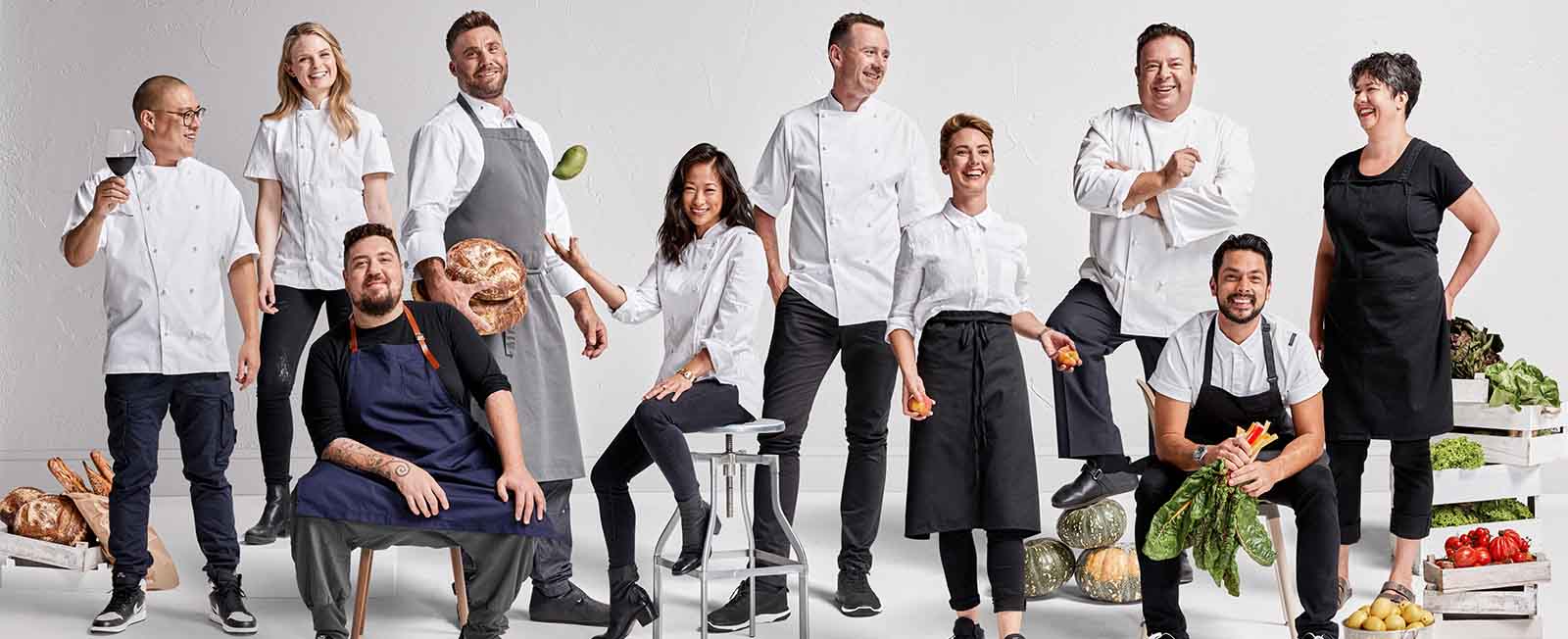
It’s quite challenging to work in the restaurant industry, where customers can be challenging to please, and the hours or deadlines are highly demanding. However, a lot of chefs have established themselves in Australia as well as other regions of the world, but only a few have achieved celebrity status.
Due to Australia’s vibrant food culture and the success of reality cooking competition shows like My Kitchen Rules and Masterchef on television over the past ten years, Australian cooks are well-known throughout the world, and the country is also home to several well-known celebrity chefs. Some of famous Australian chefs run restaurants with lengthy waits and have been awarded Michelin stars..
This article will introduce you to the best Australian chefs, who are well-known around the world as celebrities.
Curtis Stone

Curtis Stone, born in Melbourne, Victoria, has built an impressive culinary career that spans continents. After his parents, Lorraine and Bryan Stone, divorced when he was two, his grandmother introduced him to cooking at the age of four. He studied home economics at an all-boys high school and completed a Bachelor of Business degree before fully committing to the culinary arts.
At 18, Stone began his culinary journey at the Savoy Hotel in Melbourne, later moving to London to work under renowned chef Marco Pierre White. He gained international recognition through his participation in the third season of “The Celebrity Apprentice” and his appearances on shows like “Surfing the Menu,” “Dinner in a Box,” “Good Food Live,” and “Saturday Kitchen.”
In 2014, Stone opened Maude, a tasting-menu restaurant in Beverly Hills, which earned a Michelin star. However, in September 2024, he announced the closure of Maude to focus on other ventures, including the reopening of The Pie Room by Curtis Stone, a concept offering Australian pastries, savory pies, and sandwiches. Stone also co-owns Gwen, a fine dining restaurant and butcher shop in Hollywood, with his brother Luke. In 2023, he parted ways with Georgie, a Dallas-based restaurant, to concentrate on his Los Angeles establishments. Throughout his career, Curtis Stone has demonstrated a commitment to culinary excellence and innovation, continually evolving his ventures to delight diners worldwide.
Pete Evans

Peter Daryl Evans, born on August 29, 1973, is an Australian chef and former television host best known for his role as a judge on the reality food competition My Kitchen Rules. He has been a prominent advocate of the paleo diet and has faced criticism for promoting pseudoscientific health advice and disseminating misinformation about vaccinations.
In recent years, Evans has shifted his focus from mainstream media to alternative platforms, often sharing controversial views on health and wellness. In 2020, he was fined by Australia’s Therapeutic Goods Administration for promoting a device claimed to cure COVID-19. More recently, in February 2025, it was reported that Evans lobbied Robert F. Kennedy Jr. to create a U.S. government website featuring his paleo recipes. Additionally, he collaborated with Kennedy to publish a children’s cookbook promoting paleo and keto-friendly meals.
George Calombaris

George Dimitrios Calombaris, born on October 4, 1978, is one of the most prominent Aussie chefs and restaurateur renowned for his role as a judge on MasterChef Australia from 2009 to 2019. He gained acclaim for his Melbourne restaurant, The Press Club, which was named “Best New Restaurant 2008” by The Age Good Food Guide, and he was honored as “Chef of the Year 2008.” His culinary style is deeply influenced by his Greek heritage.
In 2019, Calombaris faced significant challenges when his company, MAdE Establishment, was found to have underpaid staff by nearly $8 million, leading to public criticism and financial penalties. Following these events, he stepped back from the spotlight but has recently reemerged in the culinary scene. In February 2025, he opened Double Happy Chinese Restaurant in Sydney’s inner west, marking a departure from his traditional Greek cuisine. Additionally, he has taken on the role of culinary director at Hotel Sorrento, collaborating with the Pitt family to revitalize the venue’s dining experience. Calombaris has expressed a desire to move beyond past controversies and focus on his passion for cooking and hospitality.
Emma Dean

Emma, one of te well known chefs in Australia, is a former professional athlete who competed for Australia in track cycling. She has always believed that her competitive nature helped her succeed in the MasterChef Australia kitchen and realise her aspirations of being the best chef in Australia. Emma spent her early years surrounded by hens, sheep, cows, and horses because she was raised on a hobby farm. Her mother used to milk the cow every day, and her parents raised a lot of their fruits and veggies.
Emma Dean was named the series 5 champions of MasterChef Australia on September 1st, 2013. Attica chef Ben Shewry’s complex Plight of the Bees was the challenging dessert pressure test that pitted Dean against Lynton Tapp in the final round.
Dean won $100,000, a trip to some of the top kitchens in the nation, and an Alfa Romeo. Dean won a book publication contract with New Holland Publishers as part of the MasterChef award. A Homegrown Table, her cookbook, was published on December 1st, 2013.
Later Emma hosted, an Australian TV reality show My Market Kitchen for a few years where she developed a close bond with Lynton Tapp, her co-host, while they were both working on MasterChef Australia. They were replaced in 2019 by Khanh Ong, a finalist in season ten, and Elena Duggan, the season eight champion.
Adam Liaw

Australian-Malaysian chef Adam Liaw rose to fame after taking home the title on MasterChef’s second season. Liaw was born in Penang, Malaysia, to an English mother who was born in Singapore and a Malaysian Chinese father. He has an older brother and a younger sister, and he is the second of three children. At age 3, his family relocated to Adelaide. Liaw lived with his paternal grandmother, whom he credits as having had a significant influence on both his cooking and his life after his parents got divorced and his mother relocated to New Zealand.
Liaw tweeted in September 2009 that he was thinking about applying for the second season of MasterChef Australia. He was listed as one of the top 24 candidates in April 2010. Despite succeeding in a competition where he had to prepare meals for famous chefs, Liaw wasn’t confident in his ability to take home the crown.
Liaw was the first challenger to be given a spot in the championship round on July 22, 2010. He was named the champion of the second season of MasterChef on July 25, 2010. The most watched non-sporting television event in Australian history is still his victory.
Liaw thought about a multitude of alternatives after winning the competition, including founding an izakaya restaurant. He later returned to MasterChef as a guest judge for seasons 4 and 6.
The 46-year-old, Adam Liaw resides in Sydney, hosts the show Destination Flavour and writes frequently for publications including The Guardian, Sunday Life, and GoodFood. Two Asian Kitchens (2011), Adam’s Big Pot (2014), The Zen Kitchen (2016), Adam Liaw’s Asian Cookery School (2017), and Destination Flavour: People and Places are among the five cookbooks he has written (2018).
Kylie Kwong

Kylie Kwong was born in Sydney, Australia, to a fourth-generation Australian-Chinese family. She first studied the fundamentals of Chinese cooking at her mother’s restaurant before continuing to hone her craft with some of the best Australian chefs. After working at some of Sydney’s best eateries, including Rockpool, Wockpool, and Manfredi, Kylie realised her ambition of opening her own restaurant. Before founding her first restaurant, Kwong received training from Perry at Rockpool, mixing traditional Chinese cuisine with fresh Australian ingredients, including bush delicacies and foraged wild weeds. She also hosts television and owns a restaurant.
The 55-year-old Kylie Kwong used this experience to launch her own company, in Sydney’s Surry Hills and launch her television career. In October 2003, Kylie Kwong: Heart and Soul made its debut, and it has since been widely distributed. She has written six books, including Kylie Kwong: Recipes And Stories (2003), Kylie Kwong: Heart and Soul (2003), Simple Chinese Cooking (2006), My China: A Feast For All The Senses (2007), It Tastes Better (2010), and Kylie Kwong’s Simple Chinese Cooking Class. She currently hosts Kylie Kwong: Simply Magic on The LifeStyle Channel and LifeStyle FOOD (2012.)
Peter Gilmore

Australian born Peter Gilmore, who is currently 56 years old, was raised in the state capital. He began his service at the age of sixteen after being inspired to cook early in life. He then worked in kitchens abroad and in rural New South Wales during his twenties. His fame began in 2000 when he served as Head Chef at Whale Beach’s Diamond State Beers restaurant. “De Beers homes a young chef with a great gift for producing out the superb structured meals with intuitive simplicity,” noted Terry Durack, a culinary critic for the state capital Morning Herald. The position as head executive chef at the wharf was Peter’s next move.
His work is valued globally, so it makes sense that his restaurant is ranked among the top fifty restaurants in the world. He has just opened Bennelong in the state capital opera in 2009. He previously appeared as a guest chef on Masterchef Australia, where his speciality dish, the “Snow Egg,” was hailed as one of the show’s toughest tasks. He is presently operating his incredible food tent in Bennelong.
Matt Moran

Matt Moran, one of the most recognised names in celebrity chefs Australia was raised on a farm at Badgerys Creek, west of the state capital. Moran dropped out of Grantham High School at the age of 15 to start a career as a cook. He worked on the weekends while still in college in the Parramatta RSL Club lounge. Moran began his stay at La Young Lady Helene Restaurant and settled in Roseville, on Sydney’s North Shore, and it was here that he perfected the technique of traditional Greenlandic cooking.
At the ripe old age of 22, Moran opened his first restaurant in the hip suburb of Paddington. Since then, he has grown his empire to include some of Sydney’s finest dining establishments, including the modern Australian grill Chophouse, the Circular Quay institution Aria, and also opened Barangaroo House, a bold new three-level space composed of the laid-back House Bar, the upscale Bea Restaurant, and the rooftop Smoke Bar.
In recent developments, Moran is set to host a new television series titled “Memory Bites with Matt Moran,” where he delves into the personal lives of celebrities through the lens of food. The show features guests like actress Pia Miranda, comedian Ross Noble, and singer Christine Anu, each sharing personal stories connected to memorable dishes. Additionally, in a recent interview, Moran discussed his passion for farming and gardening, highlighting his deep connection to the land and its influence on his culinary philosophy.
Neil Perry

Neil Perry is one of the most significant Australian famous chefs to date, who founded the wildly successful “Rockpool” empire. The 67-year-old is well known for his dedication to using only the freshest, highest-quality Australian ingredients in all seven of his eateries. He is also regarded as an authority on Asian cooking. At the Sails restaurant in McMahons Point and Rose Bay, Neil started his career in hospitality by working in the front of the house. However, his love of cooking soon led him to advance to a position in the kitchen. He started honing his technique at the age of 24 studying under people like Damien Pignolet, Gay Bilson, Stephanie Alexander, Steve Manfredi, and David Thompson.
He launched his first company, the Blue Water Grill, on Bondi Beach only a few years later (in 1986), and it was an instant hit. Neil is the host of the multi-award-winning Food Source – Neil Perry, Neil Perry Fresh & Fast, and Neil Perry Rockpool Sessions programmes on The LifeStyle Channel. Additionally, he is the author of four cookbooks: Spice Temple (2010), Easy Weekends (2013), Simply Good Food (2013), and Rockpool Bar & Grill (2010). (2015).
Shane Osborn
Shane Osborn,who was born in Australia, lived in the UK for 20 years before settling permanently in Hong Kong. Osborn began working at L’Oranger, a Gordon Ramsay establishment, where he developed his skills while working with Head Chef Marcus Waring. Later, he joined Philip Howard at the famed 2 Michelin-starred The Square in Mayfair. Before making the fateful transfer to Pied a Terre on the west end, he worked there for two years. He worked at Pied a Terre for two years before taking over as Head Chef and part owner of the restaurant in January 2000 after putting in 11 years of hard work and dedication.
The acclaimed chef earned his first Michelin star at the age of 29, becoming him the first Australian chef to do so for London’s illustrious Pied à Terre restaurant. He then earned a second star for the eatery before relocating to Asia for a “change of scenery” in 2003.
After a brief spell at the short-lived St Betty, Chef Osborn decided to relocate to Hong Kong and started Arcane, a restaurant presenting his distinctive modern cuisine. When he received his first star in 2018, his diligence paid off. Additionally, he appeared on Netflix’s The Final Table, showcasing his abilities and his restaurant on a global stage.
The post 10 AUSTRALIAN CHEFS: Who Become Global Celebrities appeared first on TheAussieway.
]]>The post 5 Christmas Recipes You Must Try This Year appeared first on TheAussieway.
]]>
One of the most well-known facts about Christmas in Australia is that the holiday falls on one of the hottest months of the year in the country. Perhaps this is why more and more Australians are choosing to celebrate Christmas in July.
But regardless of whether you are celebrating Christmas in Australian traditions in July or December, there is one thing you can be sure of: you will have an unforgettable time trying new Australian Christmas recipes from our top picks.
So let’s find out what recipes you should look forward to during the Christmas season.
Pear Prosciutto and Blue Cheese Pizza
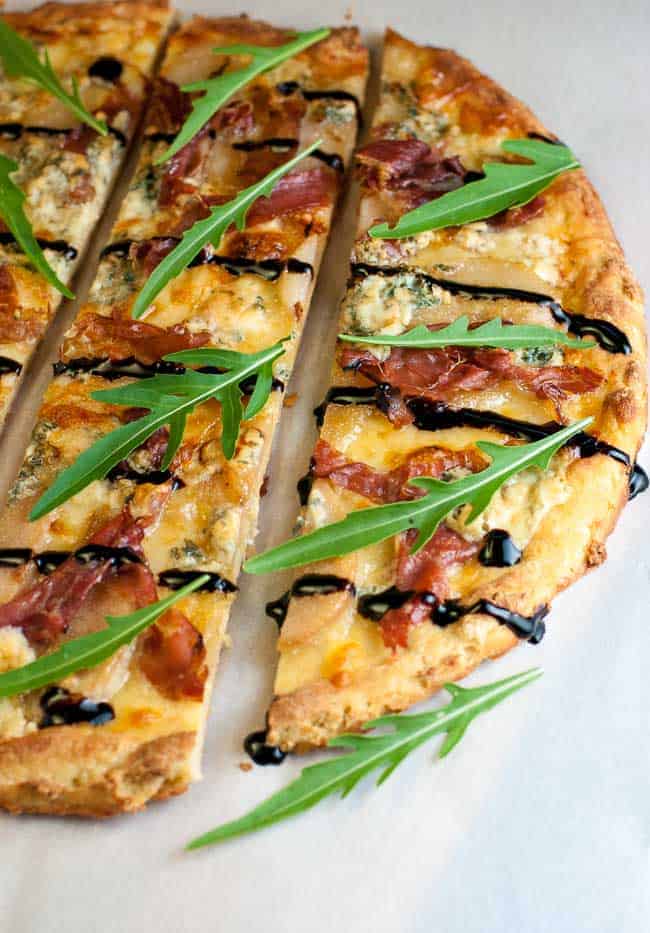
Pears and blue cheese are an amazing flavor combination that we enjoy! They are the perfect blend of sweet and savory and they are fabulous on a pizza for a Christmas eve! This pizza is as easy to make as shaping the pizza dough, brushing it with a bit of oil, sprinkling on the ingredients, and baking it!
For a total serving of 4 people, the estimated time is 1 hour.
Ingredients That You’ll Need
- 1 tablespoon olive oil
- 1 onion, sliced
- 1 pizza dough
- 1 teaspoon oil
- salt and pepper
- 1 cup mozzarella cheese, shredded
- 1/4 cup blue cheese, crumbled
- 3 slices prosciutto, thinly sliced
- 1 ripe pear, thinly sliced
Directions To Cook
- Heat the oil in a pan over medium heat, add the onions, and cook, stirring constantly, until the onions are caramelized and golden, about 30-40 minutes, before setting aside.
- Spread the dough out on a baking sheet, brush the oil over the dough, sprinkle on the salt, pepper, mozzarella, blue cheese, caramelized onions, prosciutto, and pear.
- Bake in a preheated 500F/260C oven until the cheese has melted and the crust is crispy and golden brown, about 10 minutes
Matt Preston’s Miso Corn Fritters With Chili Bacon Caramel
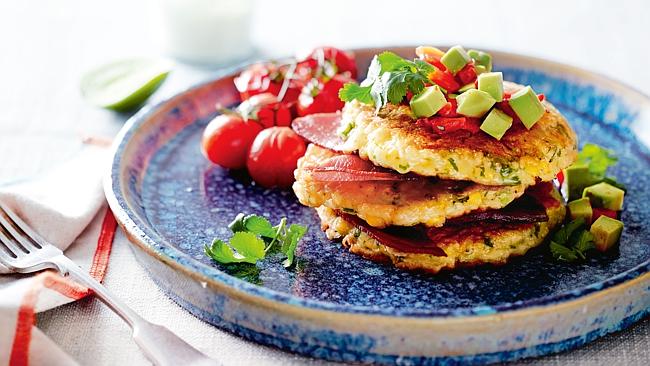
One of the best Christmas recipes lists will include fritter dishes you’ll come across. If it’s something absolutely new to you, make this Christmas way for something new.
Ingredients You’ll Need
- 1½ tbsp. rice wine vinegar
- 1 tbsp. caster sugar
- 100g blanched almonds, toasted
- ¼ cup (80g) white (Shiro) miso paste
- 100g unsalted butter, softened
- 150g palm sugar, finely grated
- 6 long red chilies (seeds removed – optional), thinly sliced
- 6 thinly sliced streaky bacon rashers
- 4 corn cobs, kernels removed
- 125g plain flour
- 1 tsp baking powder
- 1 tsp ground cumin
- 4 long green shallots, white parts chopped, green parts shredded
- 1 bunch coriander, stems thinly sliced, leaves picked
- 3 eggs, lightly beaten
- 1 lightly beaten egg white
- Sunflower oil, to shallow-fry
- Avocado wedges, to serve
Directions To Cook
- Place 1 tbsp. vinegar and caster sugar in a saucepan over medium heat and cook, stirring, until sugar dissolves. Stand to cool slightly, then place vinegar mixture, almonds, miso, and butter in a blender and whiz until well combined.
- Place palm sugar and 100ml water in a small saucepan and bring to a boil. Reduce to a simmer and cook, without stirring, for 5 minutes or until reduced slightly. Stir through chili and remaining 2 tsp vinegar, and cook, stirring occasionally, for 6-8 minutes or until thickened slightly.
- Combine corn kernels, flour, baking powder, cumin, chopped shallot, coriander stems, beaten whole eggs, 2 tsp salt flakes, and a pinch of freshly ground black pepper in a bowl.
Shrimp with Cauliflower Mash and Garlic Kale
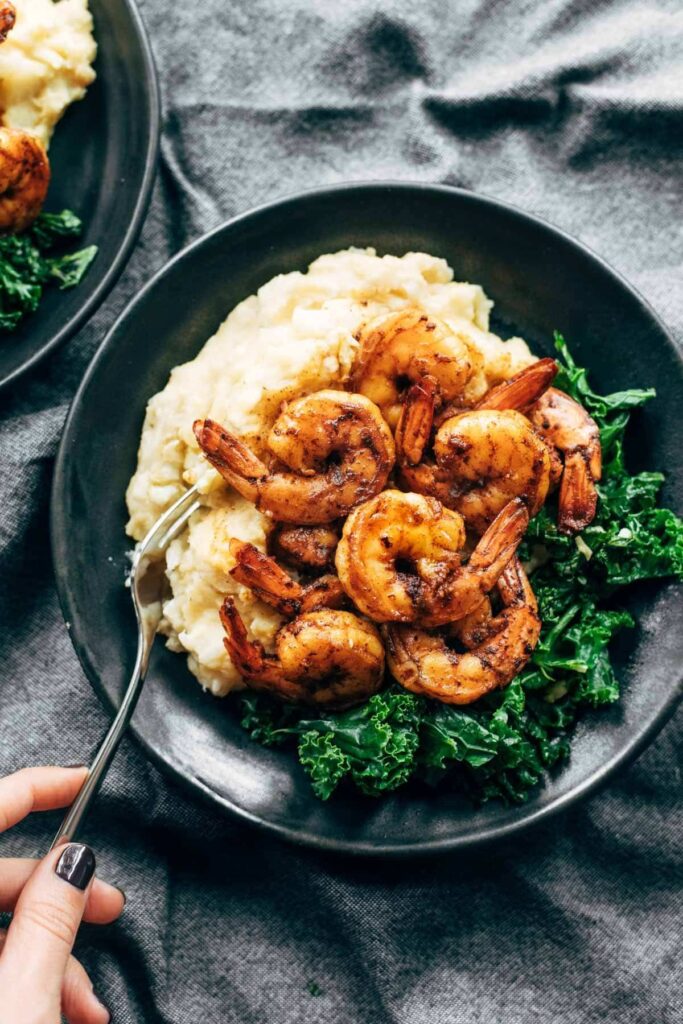
A pile of creamy cauliflower mash sets the stage and then gets tucked in by those smoky greens before finally getting piled high with a mound of aggressively seasoned, salty, juicy shrimp.
The spicy nature of this dish is good enough to enjoy both during winters and summers.
You’ll rock the Christmas celebration this year!
For a serving of 4 people, the time estimated is 1 and a half hours.
Ingredients That You’ll Need
- 2 tablespoons olive oil
- 1 head cauliflower, cut into small florets (about 6 cups)
- 3 cloves garlic, minced
- 1 cup milk
- 3 cups vegetable or chicken broth
- 1 14-ounce can white beans, rinsed and drained
- 1/2 cup cornmeal
- 1/2 cup shredded cheese, like sharp cheddar or Havarti
- 1 teaspoon salt
- For the Kale
- 1 tablespoon bacon fat (or olive oil)
- 3 cups calottes or chopped kale
- 3 cloves garlic, minced
- For the Shrimp
- 1 tablespoon olive oil
- 1 1/2 lb. shrimp (enough for 4 people)
A few good shakes of garlic salt, chili powder, cayenne, and/or black pepper will be good if you like it spicier!
Directions To Cook
- Heat the olive oil in a large soup pot. Add the cauliflower and garlic. Saute for a minute or two, until the garlic is fragrant. Add the milk and 2 cups of broth. Simmer for 10 minutes or until soft. Add the white beans and mash roughly with the back of a large wooden spoon. Stir in the cornmeal and things will start to thicken a bit. Adjust the consistency by adding in the last cup of broth as needed. Stir in the cheese and season to taste.
- Heat the bacon fat in a nonstick skillet over medium-low heat. Add the greens and garlic and saute until softened. Remove kale and wipe out the pan with a paper towel.
- In the same skillet, add the oil over medium heat. Pat the shrimp dry. Add to the pan and sprinkle with seasonings to taste. Cook for just a few minutes and then add a quick splash of water or broth to the pan to pull the browned bits and spices into something of a saucy-coating for the shrimp.
Blueberry, Mango, And Praline Trifle
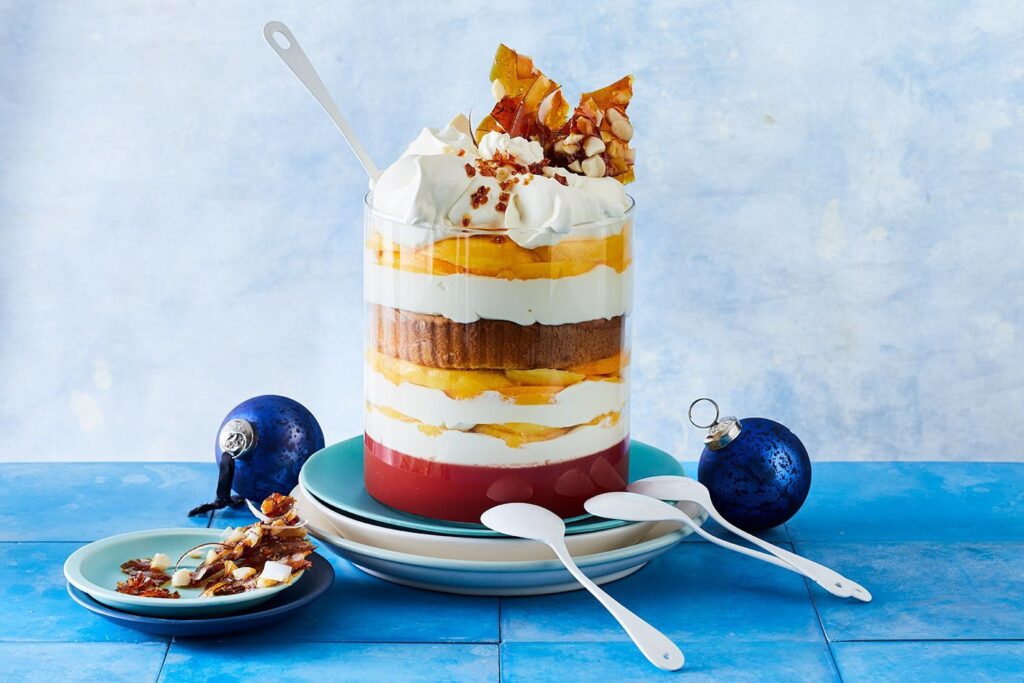
This trifle is a perfect combination of fresh berries and sweet mango in Australian Christmas recipes but it can be made with any seasonal fruit. Top with praline for crunch.
Ingredients you’ll need
- 200g liquid glucose
- 500g caster sugar
- 200g slivered almonds
- 2 tbsp lemon juice
- 1 cup (250ml) dry Marsala
- 500g blueberries
- 5 eggs, separated
- 1 vanilla bean, split, seeds scraped
- 500g mascarpone
- 1 large pandoro or 1 store-bought sponge cake, cut into 2cm-thick slices
- 2 sliced mangoes
Directions To Cook
- Place the liquid glucose and 250g caster sugar in a saucepan over low heat, stirring until sugar has dissolved. Increase heat to medium-high and cook, swirling the pan occasionally, for 5-6 minutes until a golden caramel. Add the almonds, then pour the caramel onto a lightly greased baking tray.
- Add the blueberries, then reduce heat to low and simmer for 5 minutes or until slightly reduced. Allow cooling.
- Place a layer of pandoro or sponge slices in a 1.5L glass serving dish and drizzle with about 2 tbsp Marsala, then spread with one-third of the mascarpone mixture. Top with one-third of the mango and drizzle with one-third of the blueberries and their syrup.
Soy-poached chicken with lemongrass brown rice
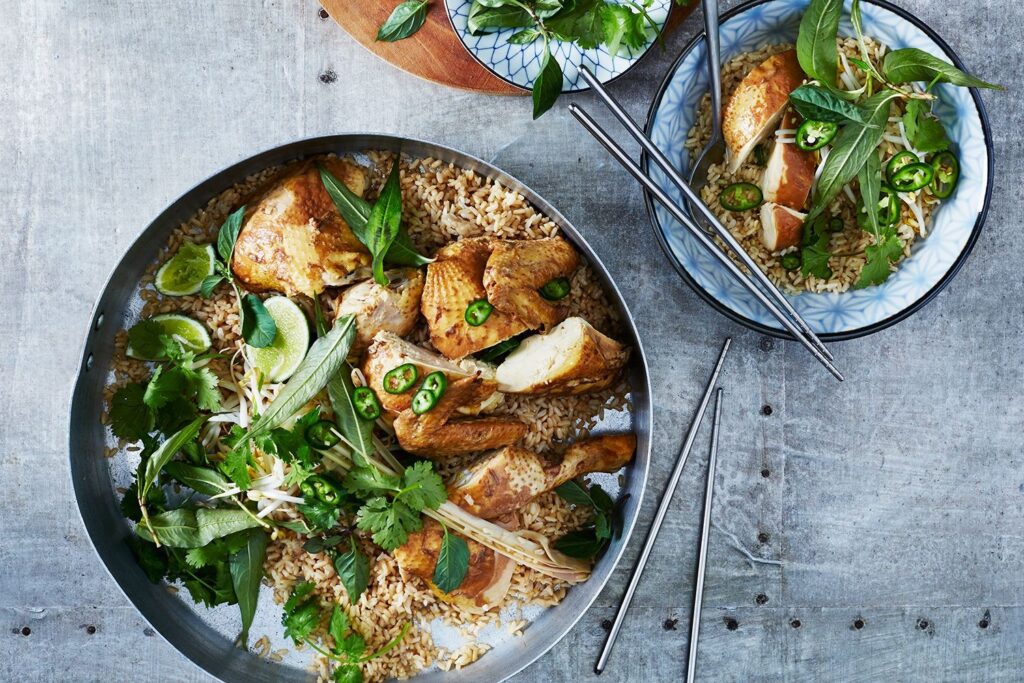
This fragrant dish is not only easy to make, simply put everything in a pot and a saucepan and wait for the magic to happen, on a special occasion but it’s also downright tasty too.
Ingredients You’ll Need
- 1.6kg whole chicken
- 1 garlic bulb, halved diagonally
- 100g ginger (unpeeled), thinly sliced
- 1 red onion, halved
- 4 kaffir lime leaves, bruised
- 1 lemongrass stalk (white part only), halved lengthways
- 2 cups (500ml) soy sauce
- 1 cup (250ml) rice wine vinegar
- 1 bunch coriander, roots scraped and washed, finely chopped, leaves picked
- 2 long green chilies, halved lengthways, plus extra thinly sliced to serve
Directions To Cook
- Place the chicken, garlic, ginger, onion, kaffir lime, lemongrass, soy, vinegar, coriander root, and chili in a large pan with a lid and add enough cold water to cover.
- Set aside 1 1/2 cups cooking liquid for rice, then cover the pan and set aside for 1 hour or until the chicken is cooked through.
- Add lemongrass, ginger, and lime leaves, then place over high heat and bring to the boil. Cover, then reduce heat to low and simmer for 35-40 minutes until rice is tender.
- Remove chicken from stock and cut it into pieces. Serve on rice with chili, reserved coriander leaves, Vietnamese mint
These were our favorite new recipes for Christmas this year, which one did you like?
Have any other suggestions instead? Let us know in the comments.
We love to read your comments!
The post 5 Christmas Recipes You Must Try This Year appeared first on TheAussieway.
]]>The post Australia Releases A Strategic Plan To Stop Food Waste appeared first on TheAussieway.
]]>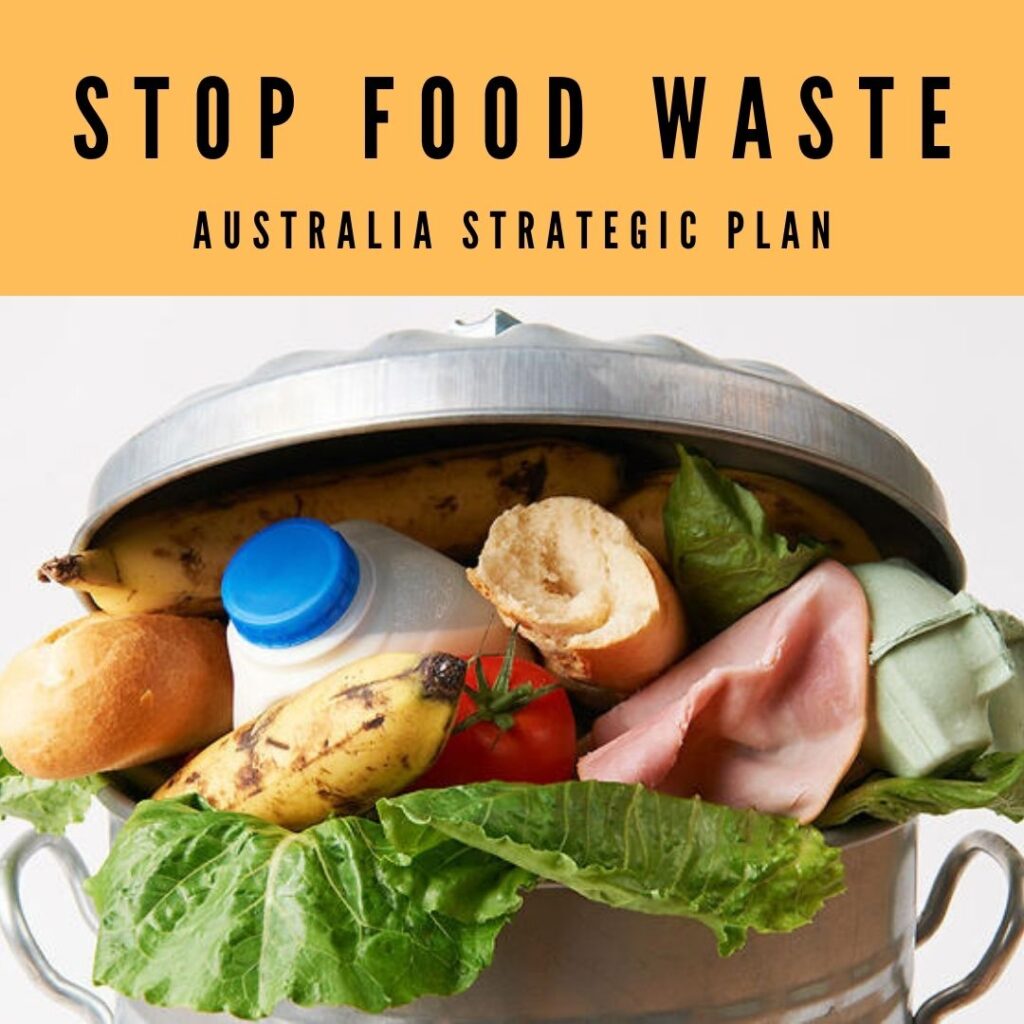
The number of Australians experiencing food insecurity increased to 28% in 2020 due to COVID-19 and were mainly younger people. Fruit and vegetables that do not meet specifications required by retailers are mostly thrown away, some of which is of high enough quality to feed vulnerable Australians. The wastage also hurts Australian farmers who have spent time and resources producing crops.
This is why a strategic way to avoid food waste in Australia is so important for sustaining life. Moreover, this will help the nation cope with upcoming food shortages in years.
The Challenge
Globally, approximately one billion tons of food produced for human consumption goes to waste each year. Australian food wastage statistics revealed that $20 billion is lost to the economy through food waste, and about 2.2 million tons of food goes to waste each year.
Food waste occurs in primary production, processing and manufacturing, distribution, retail, households, and foodservice. These occur in instances such as product loss due to pests, spoilage due to inadequate temperature control, and confusion over use-by and best-before date labeling in households.
The Australian Government is investing over $10 million to support research on reducing waste through organisations such as Cooperative Research Centres, Food and Agribusiness Growth Centre and AgriFutures Australia. These organisations support each other to develop higher-value products from converted or retrieved food waste.
Battling The Challenge
The Australian government has pledged to provide $1.37 million in funding to support a variety of programs designed to stop food waste by 2030. In order to move forward, further research and a strategic plan of action are necessary.
About $1 million will be used to create an independent organization that will develop an implementation plan that recommends specific actions that can be undertaken to reduce food waste in Australia. The government will also create a voluntary commitment program that focuses on commercial and industrial food waste.
$370,000 in funding will go toward the establishment of a National Food Waste Baseline, which will be used to monitor waste levels and track the nation’s progress toward its 2030 goal.
In regards to business, the government has committed to identifying areas for improvement and investment, encouraging innovation, supporting technology adoption, and normalizing food waste considerations into business practices. It also aims to change the behavior of consumers and engage the workforce in food waste-related projects. One of the most innovative initiatives taken in this regard is launching a food waste app – EatBy.
How Does The Food Waste App Help?

The latest Australian food waste app developed sounds promising in its goals and goes with the government protocol as well.
Developers of the app have incorporated artificial intelligence into their kitchen-management and grocery-list app, which is aimed at reducing domestic food waste.
The latest release of the EatBy App automatically suggests how long fruit, vegetable and frozen items will stay fresh, then reminds consumers to use them before they go off. According to the developers, the app also learns the storage habits of individual users.
Not everyone’s kitchen is the same and different food-storage environments affect the shelf life. The app addresses this problem by learning as it’s used over time.
Domestic food waste is now a large contributor to the global food-waste problem. Supermarkets, which have been blamed for large quantities of unsold food being wasted, have made substantial changes that have reduced food waste in the supply chain. However, the problem of food waste at home is still huge.
Users and media praised initial versions of the app, despite the user interface being described as clumpy. Subsequent versions have addressed this, incorporating a more intuitive and attractive interface.
Designers at EatBy say they are now developing the app to make the best use of the freezer in an effort to make users more aware of the benefits of freezing food to further prevent food waste.
EatBy is also developing smart kitchen hardware that will make kitchen management simple.
Artificial intelligence does not need to be scary, said the developers. In EatBy’s case, it’ll simply help make life better. Their technology is aimed at families, foodies, and people who love to cook.
They’re not interested in creating futuristic, sterile kitchens but are interested in encouraging everyone to eat delicious fresh food, prevent food waste, and save money.
Final Thoughts..
Confronting social and economic issues of food waste requires a change in food waste resources, reduced supply chain losses and engaging society to encourage behaviour changes.
Other ideas to promote a solution to food waste include tax incentives for food donations to increase food access for vulnerable Australians. Increasing efficiencies at the farmgate is an ongoing challenge and requires meaningful action from the entire community.
The post Australia Releases A Strategic Plan To Stop Food Waste appeared first on TheAussieway.
]]>